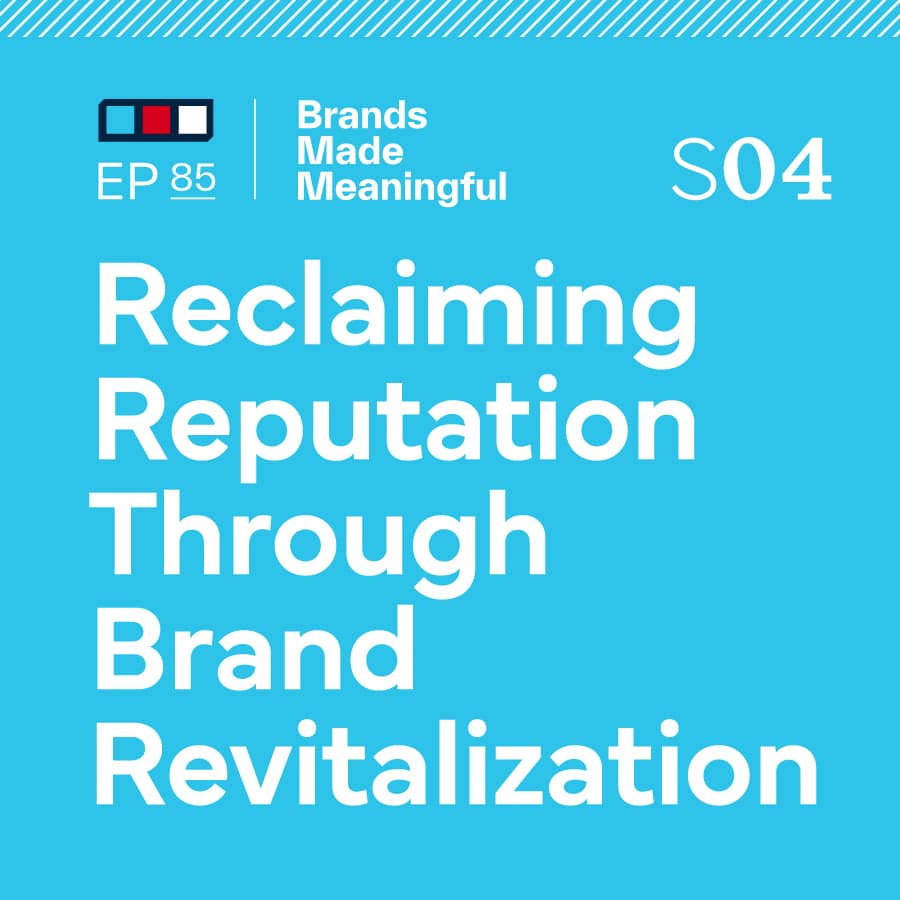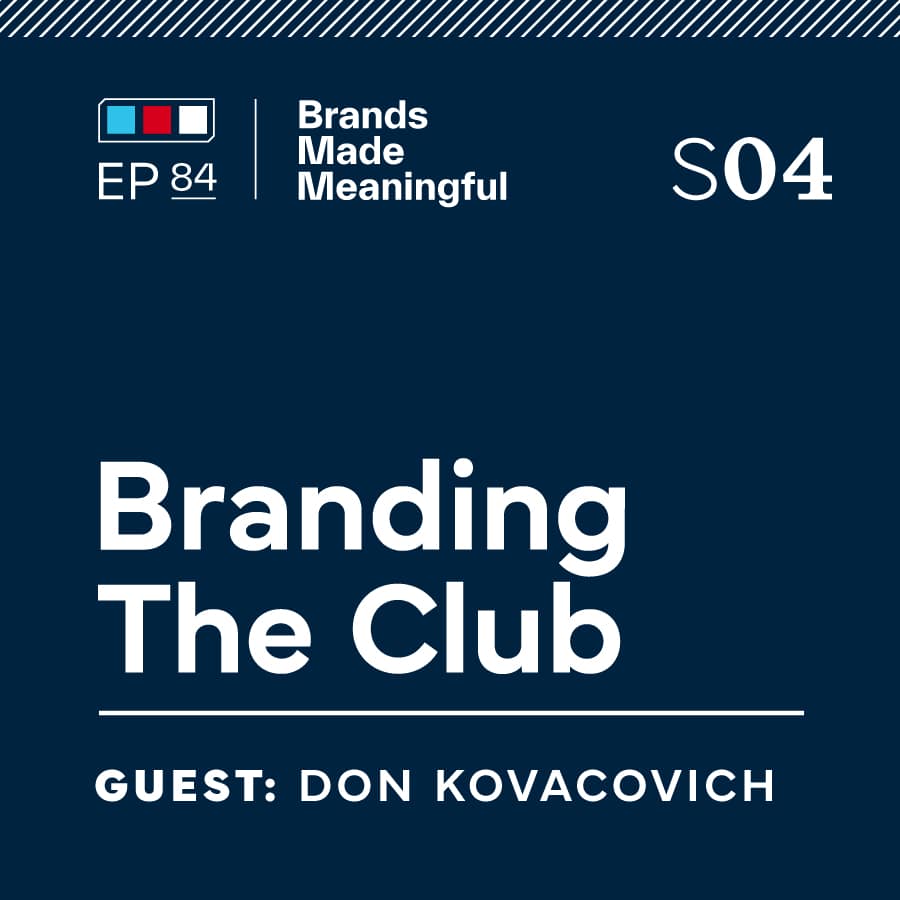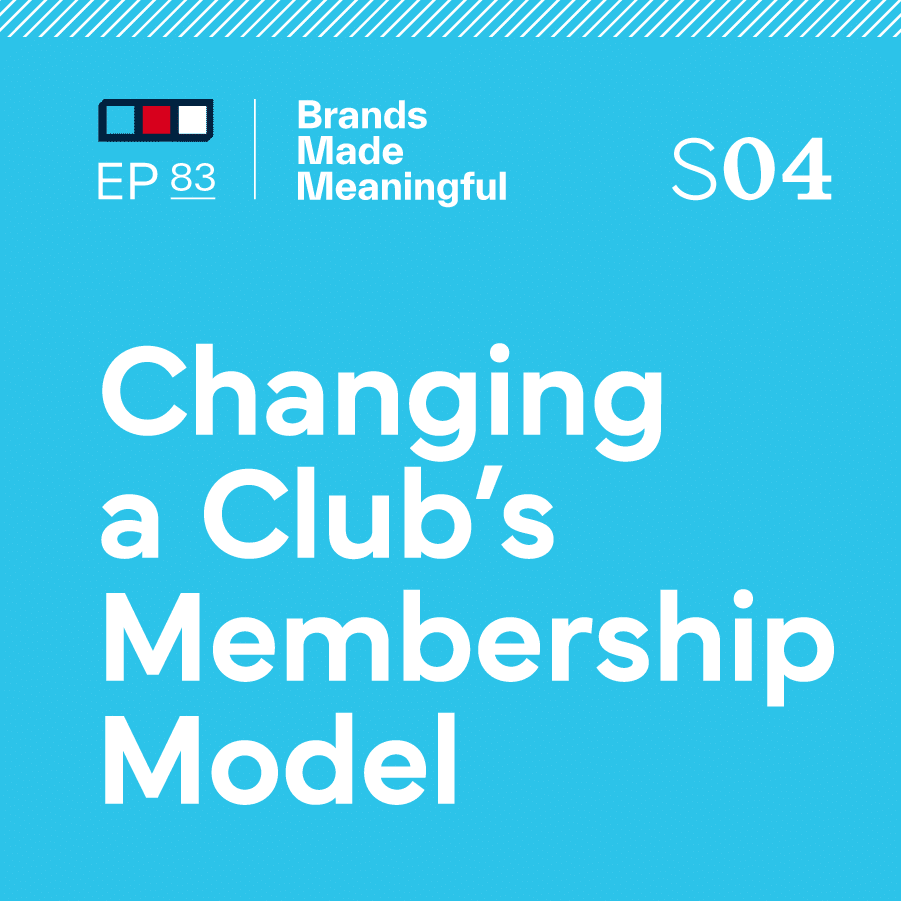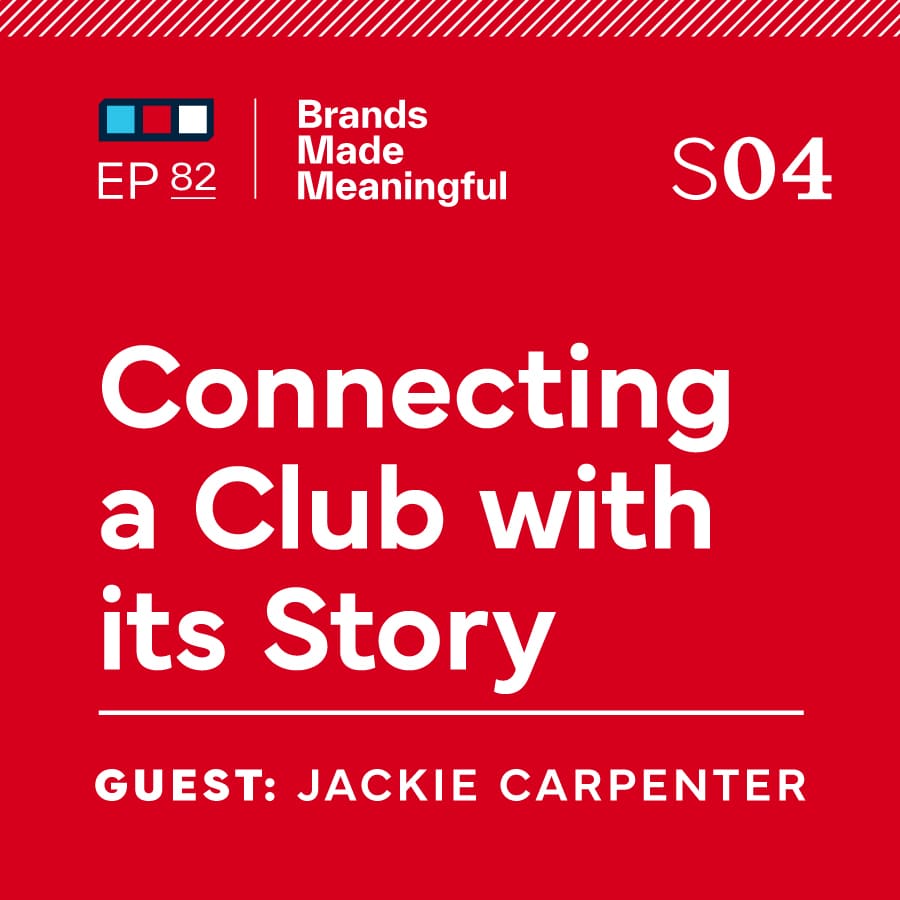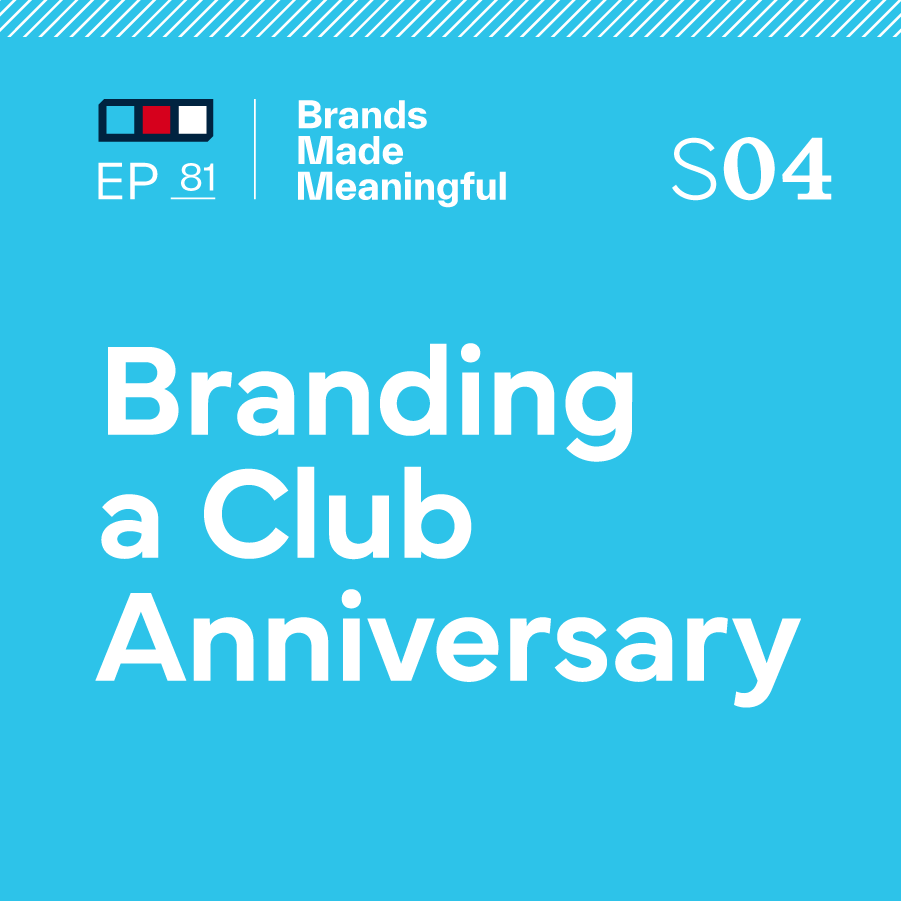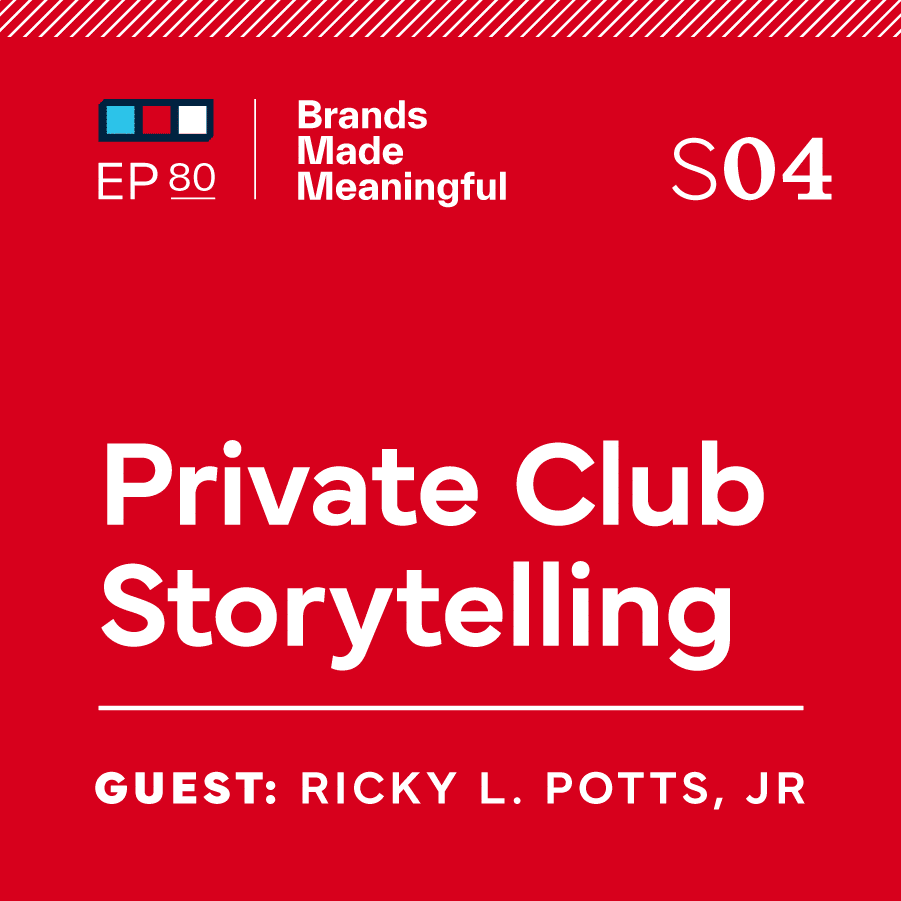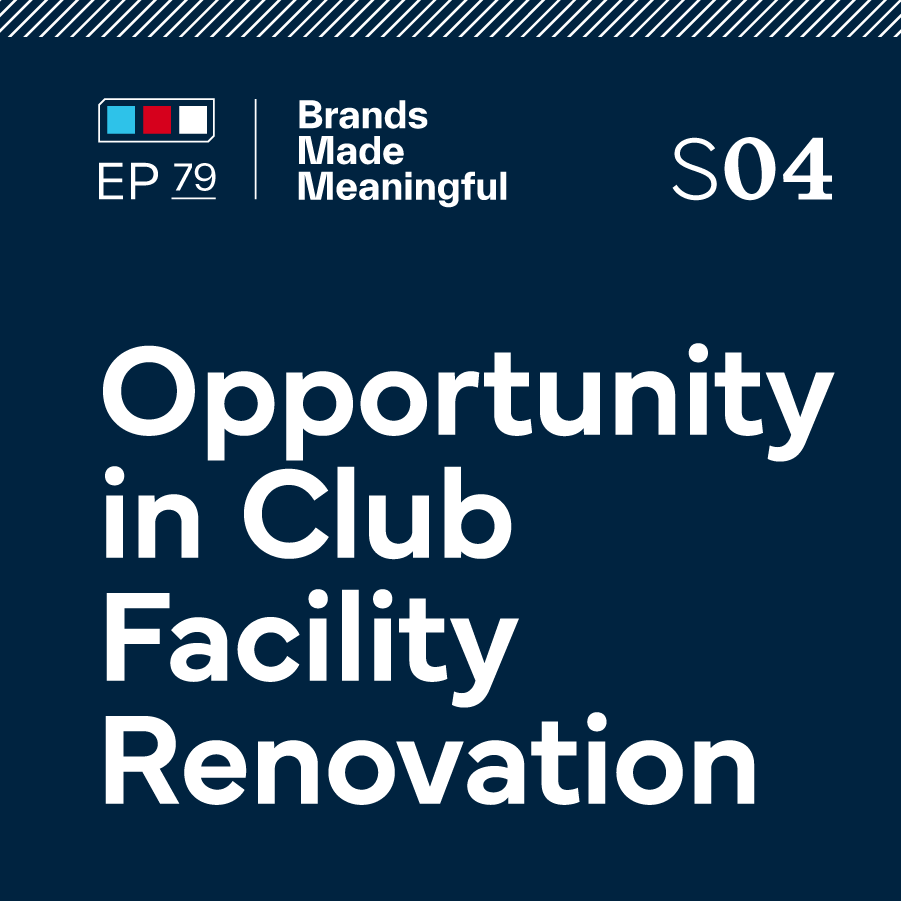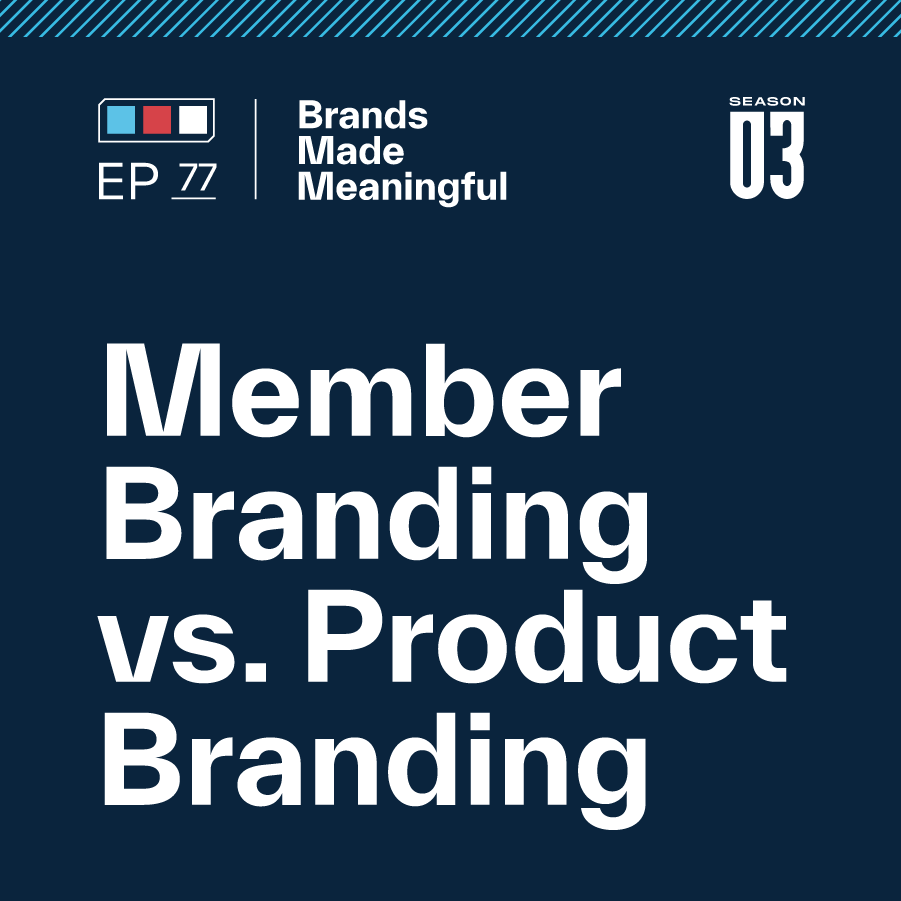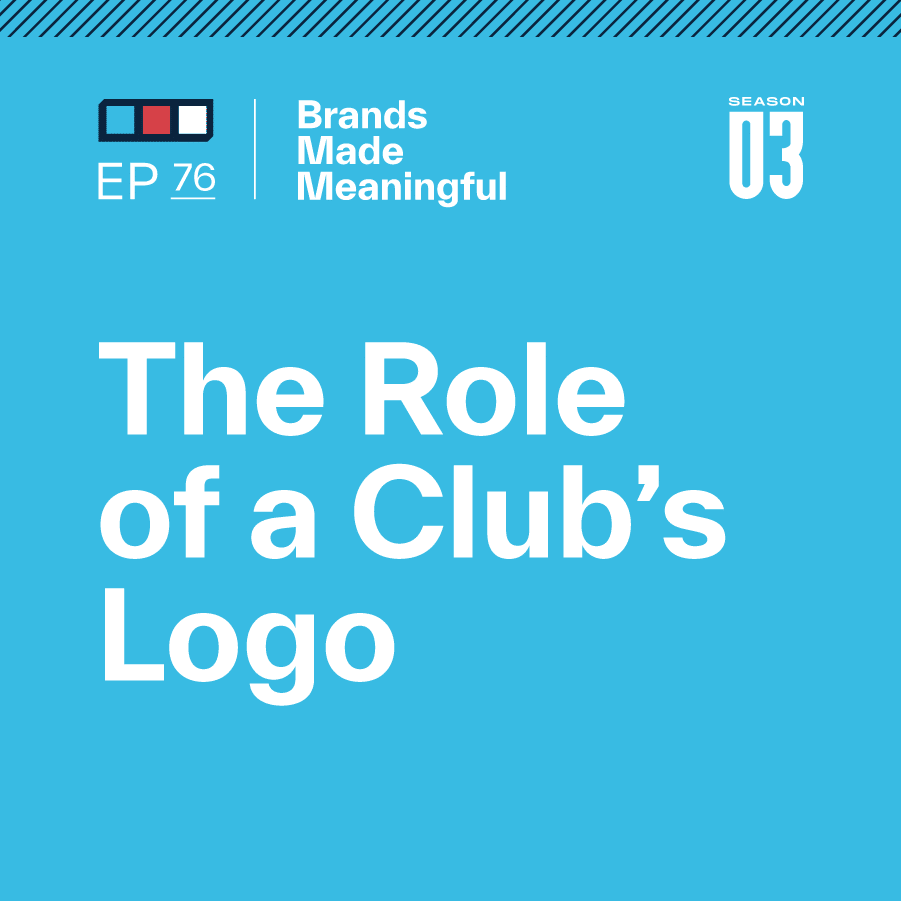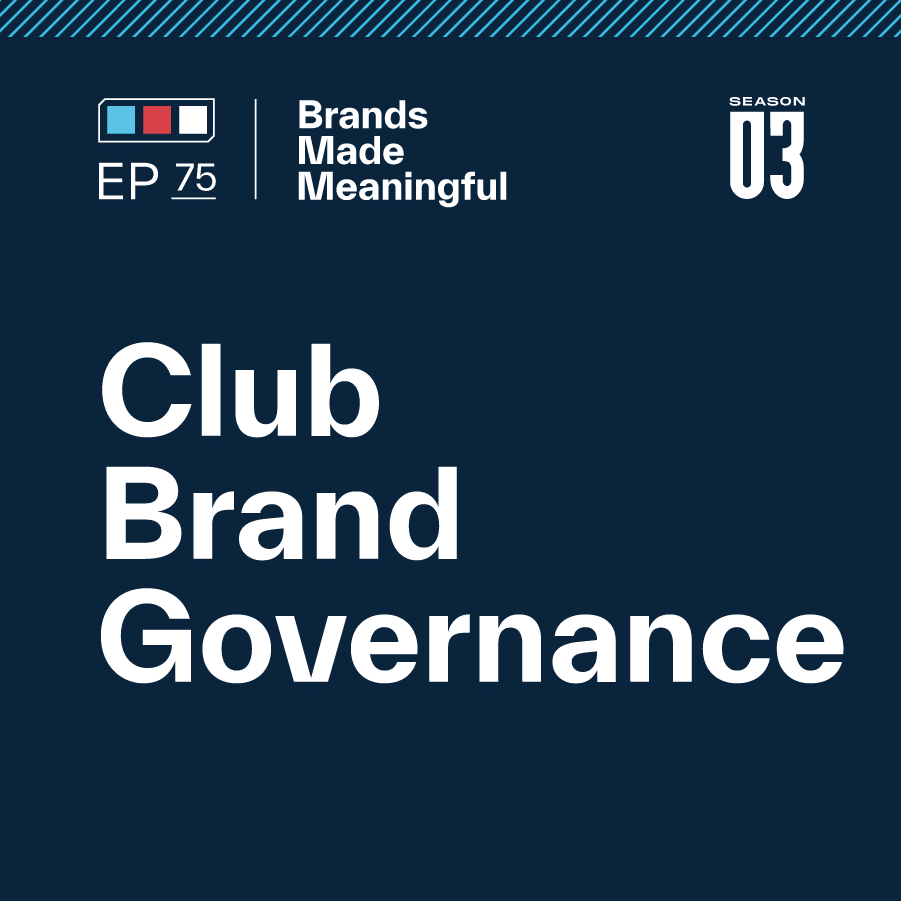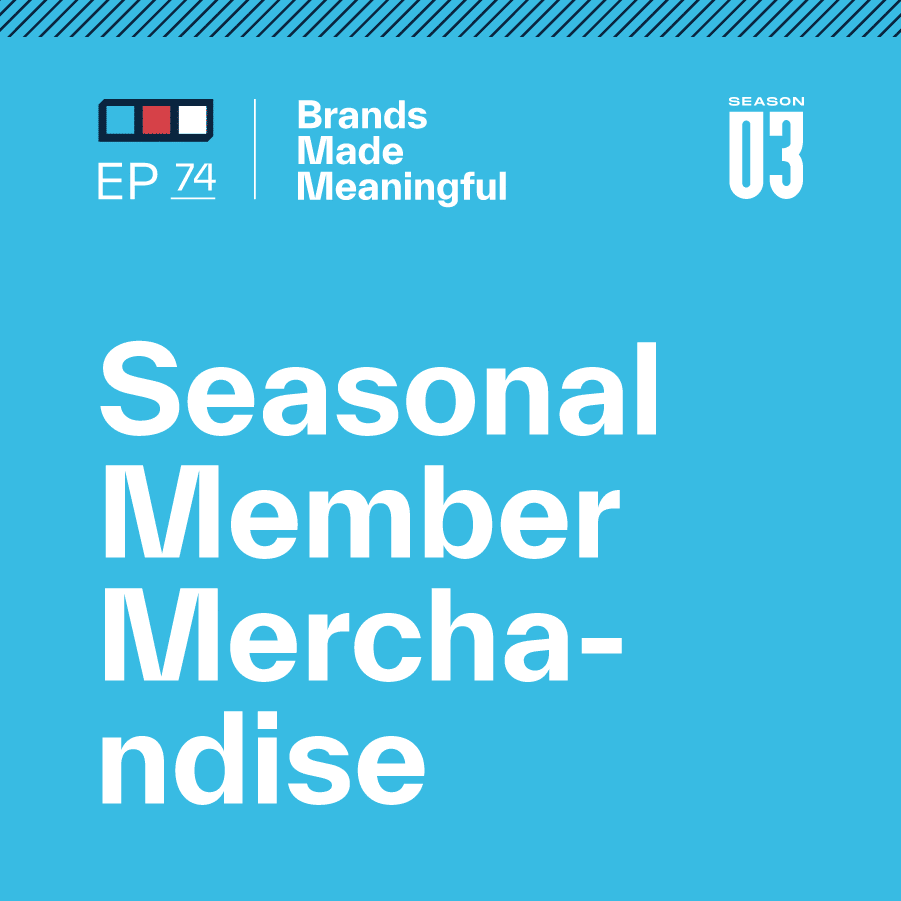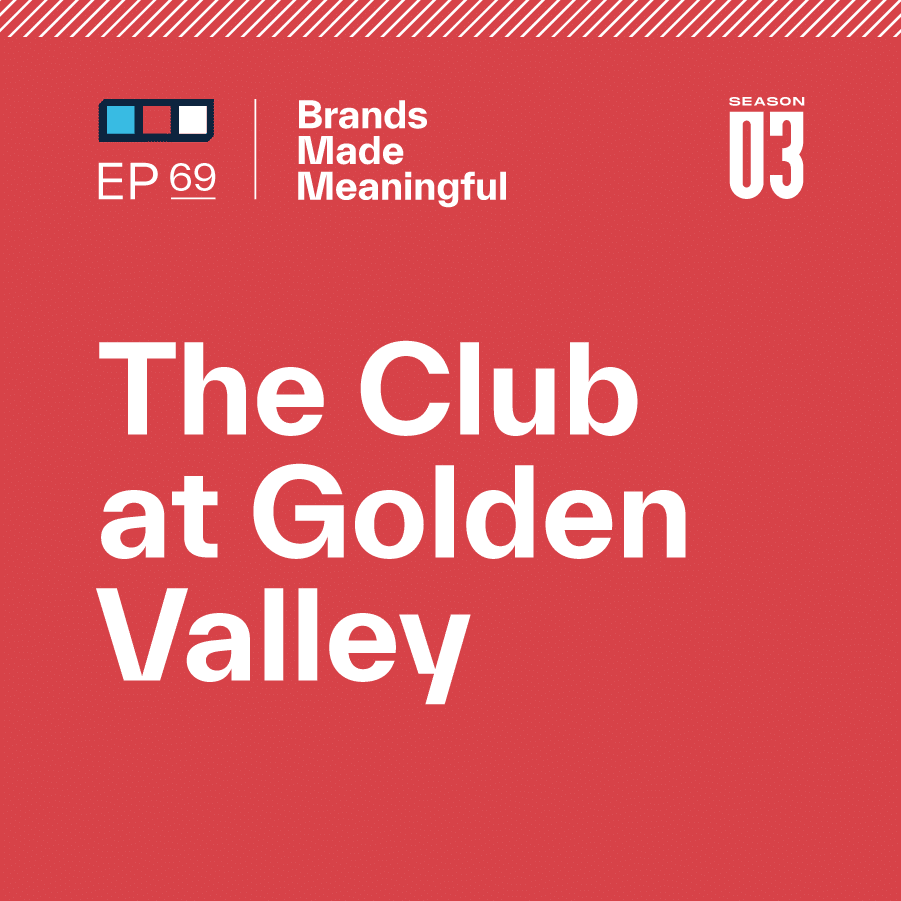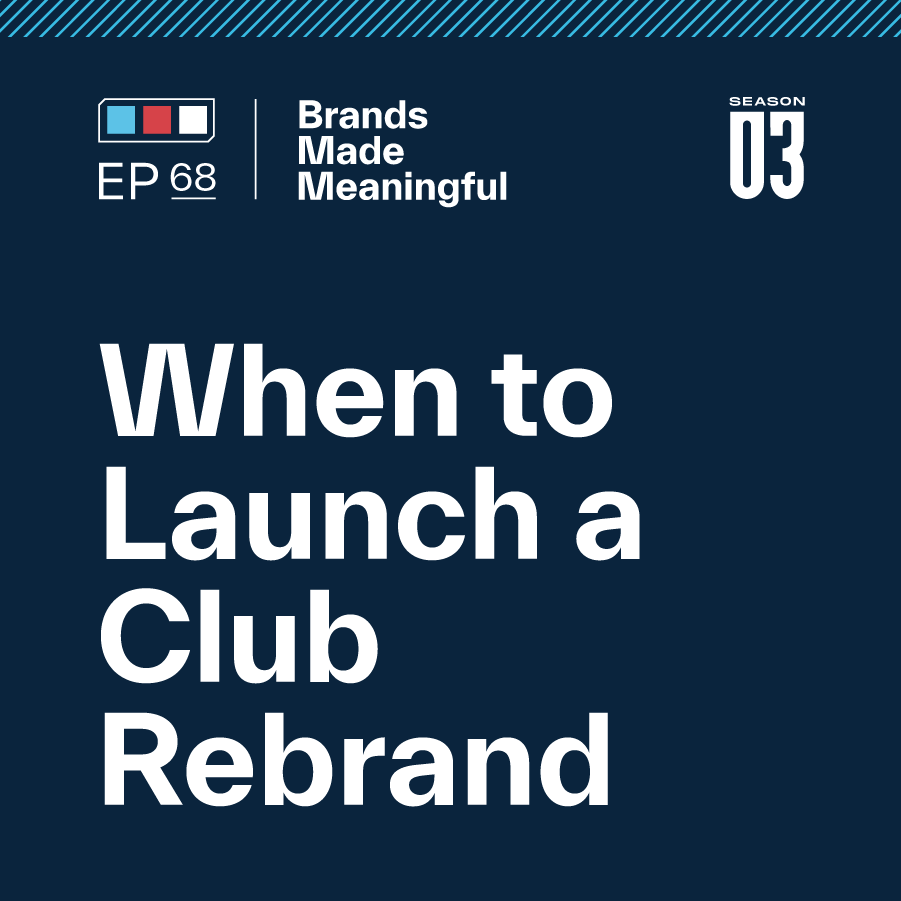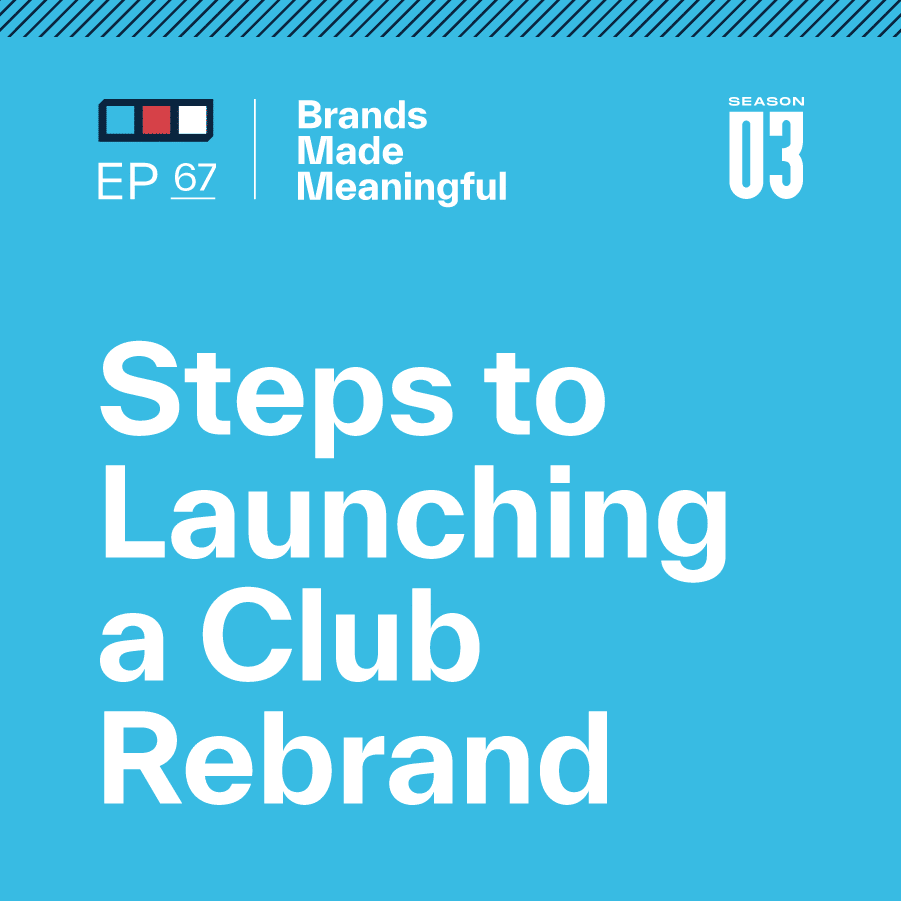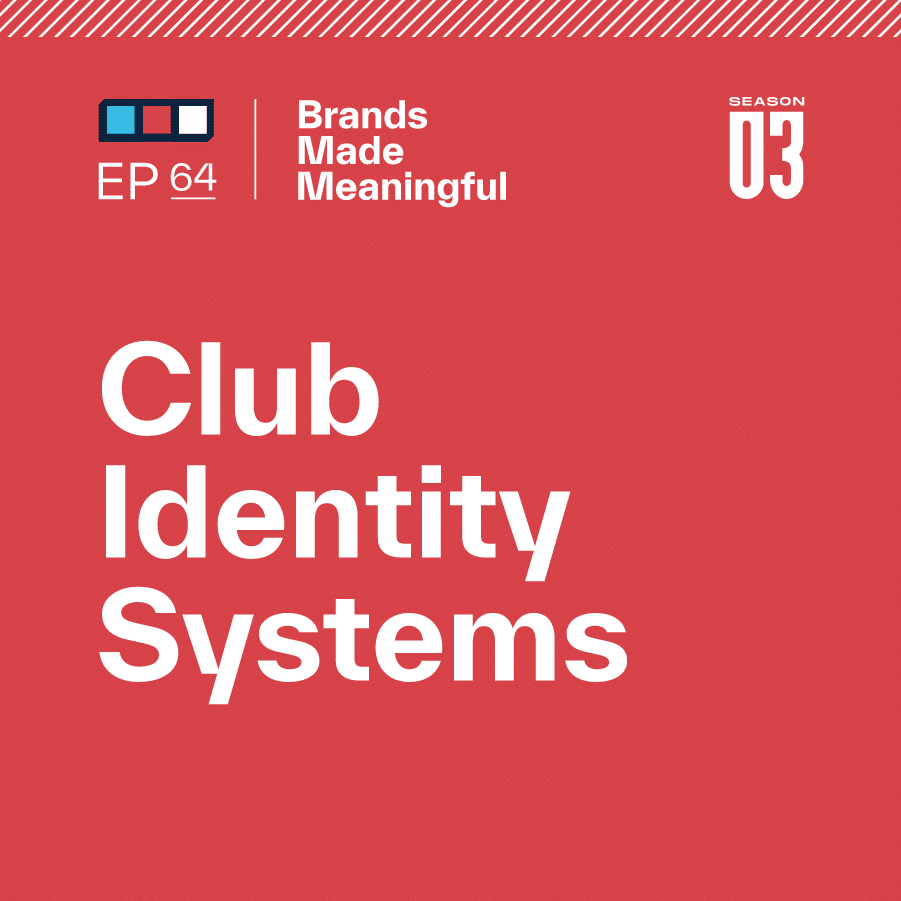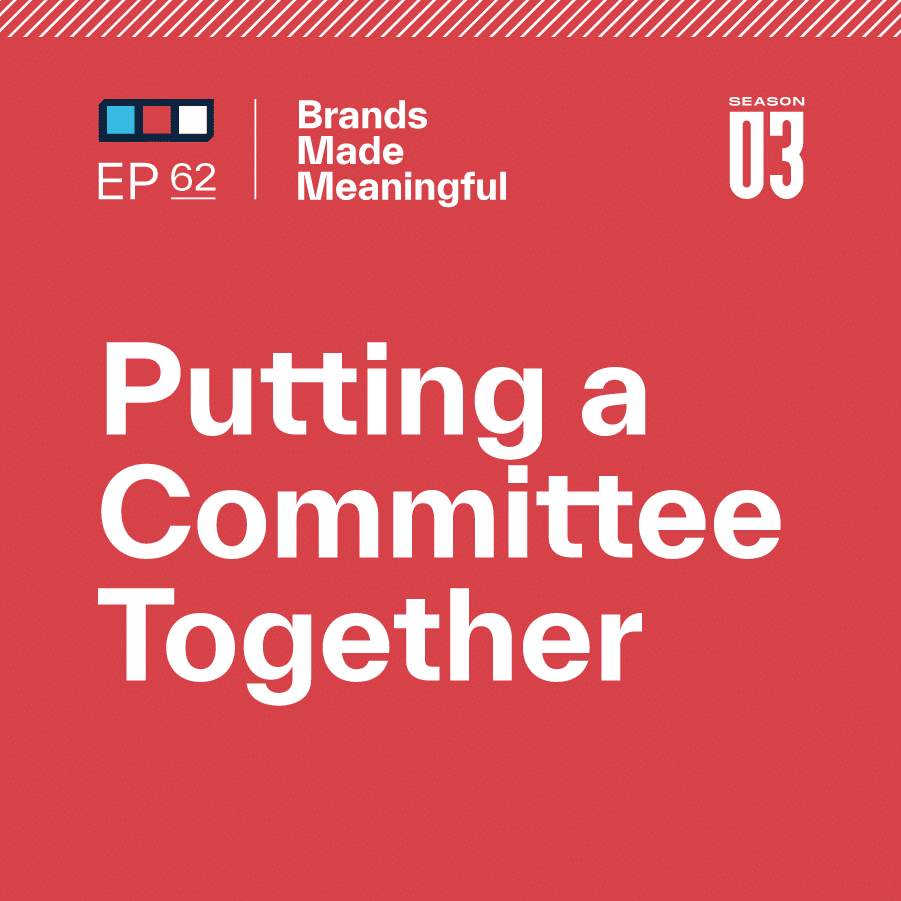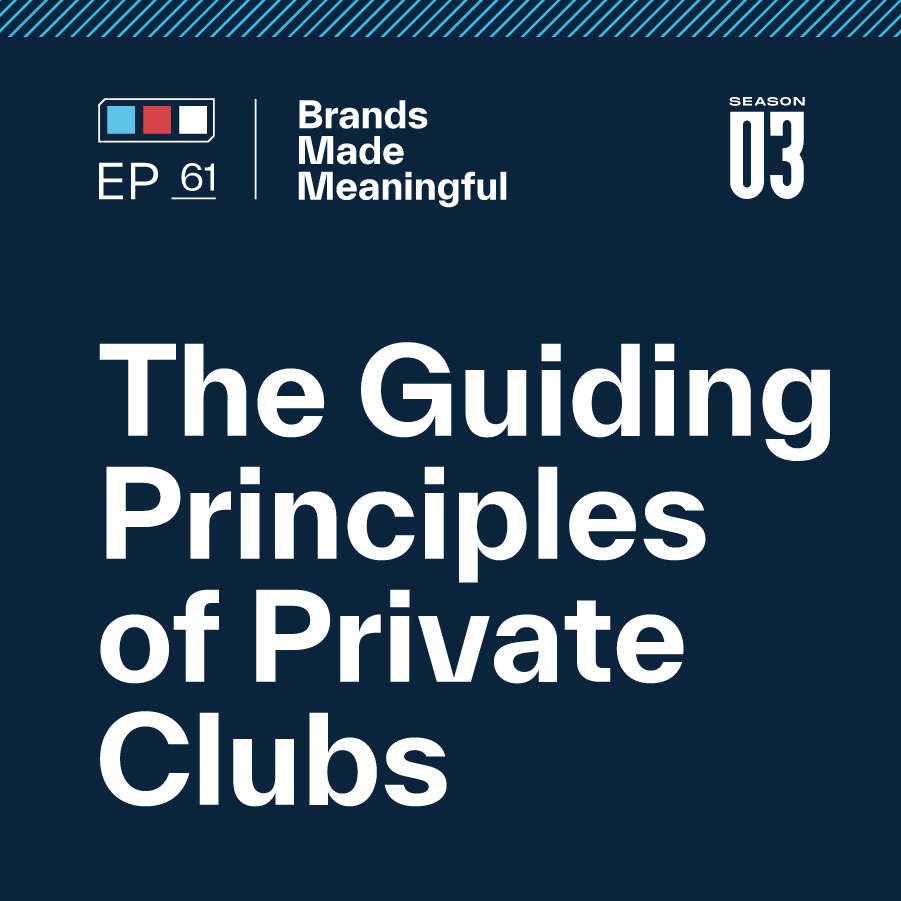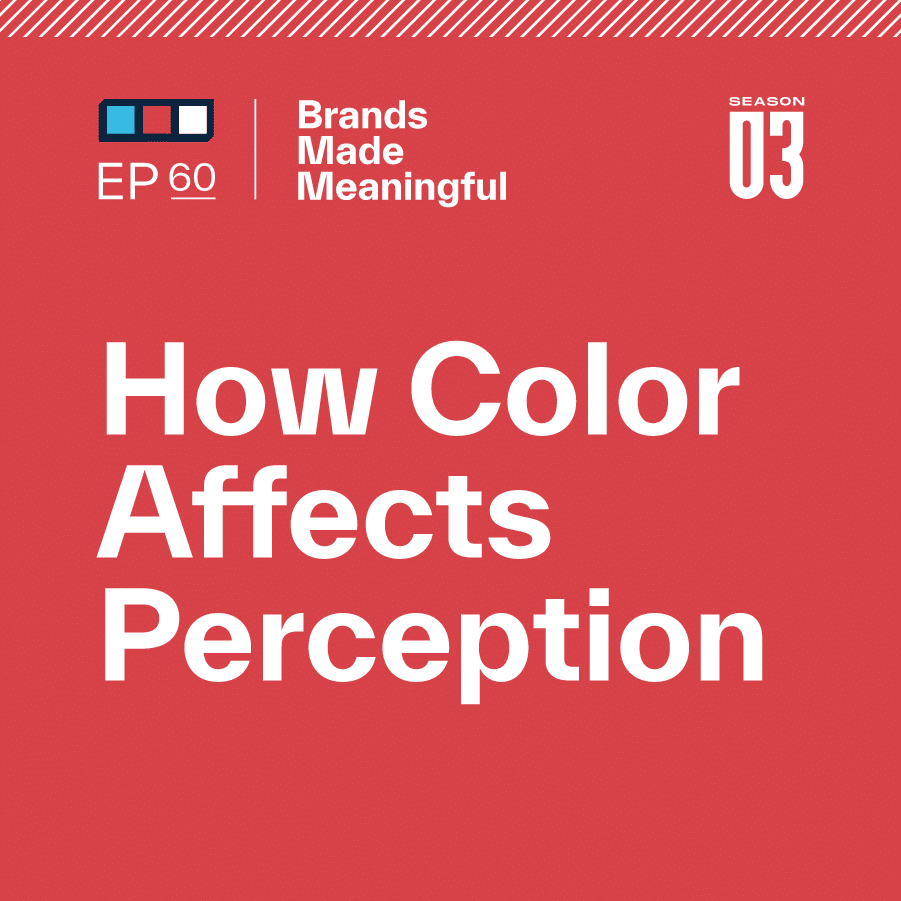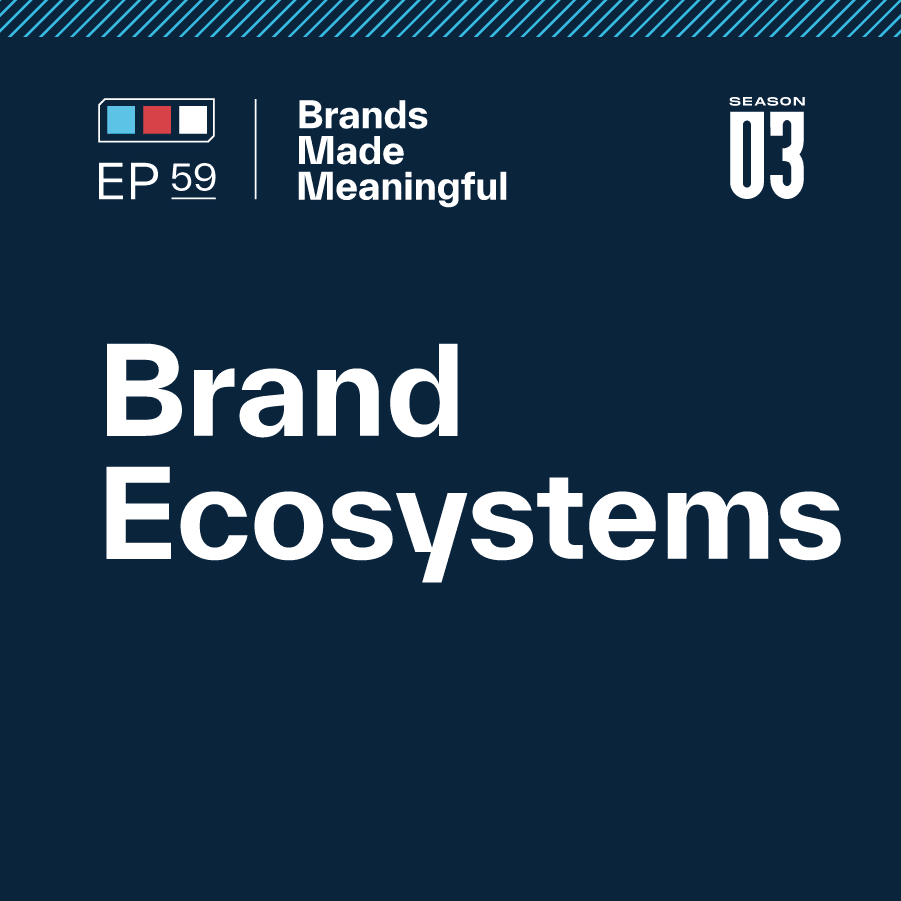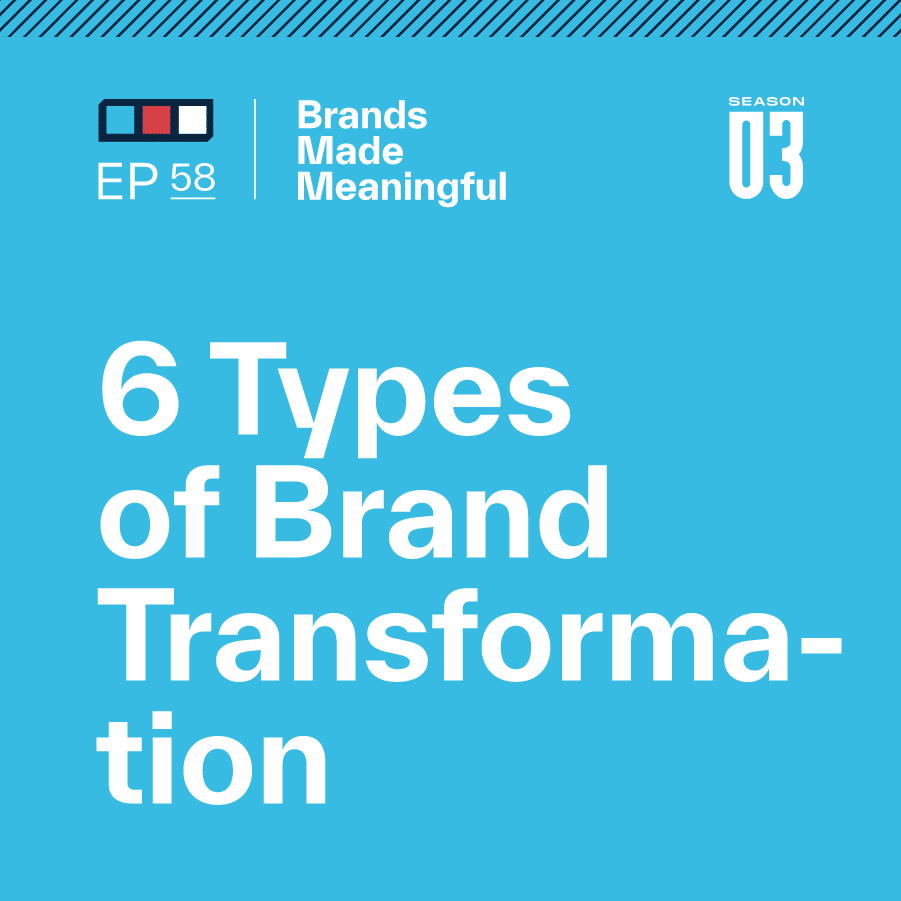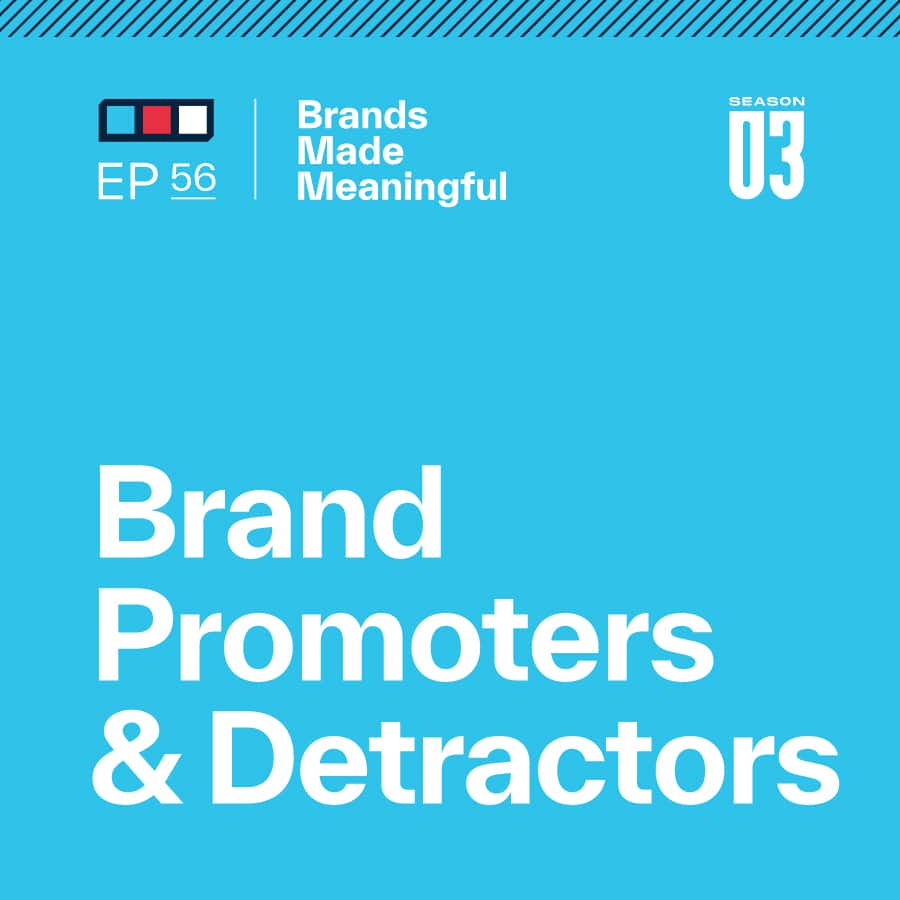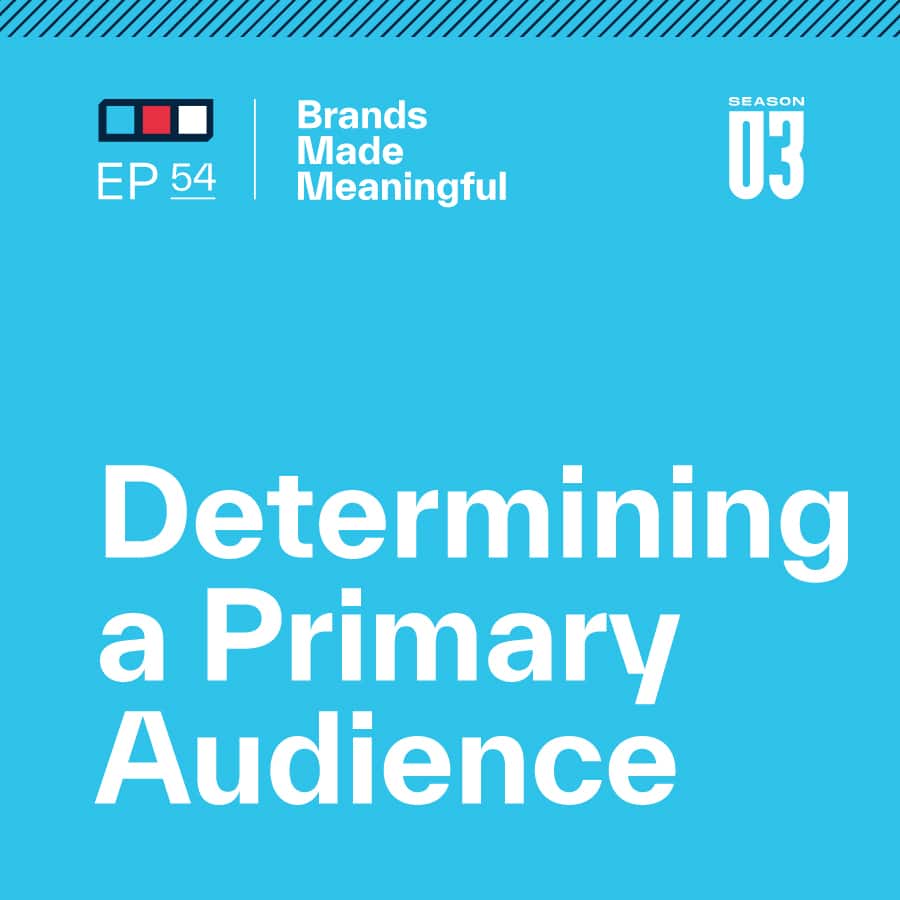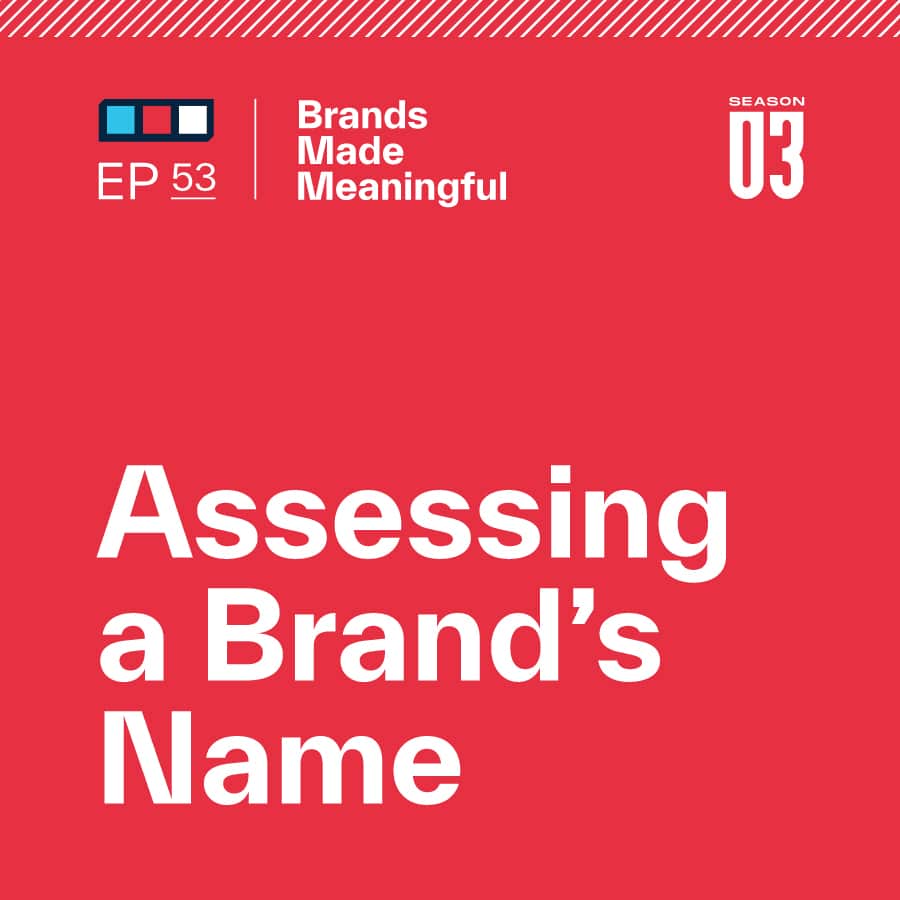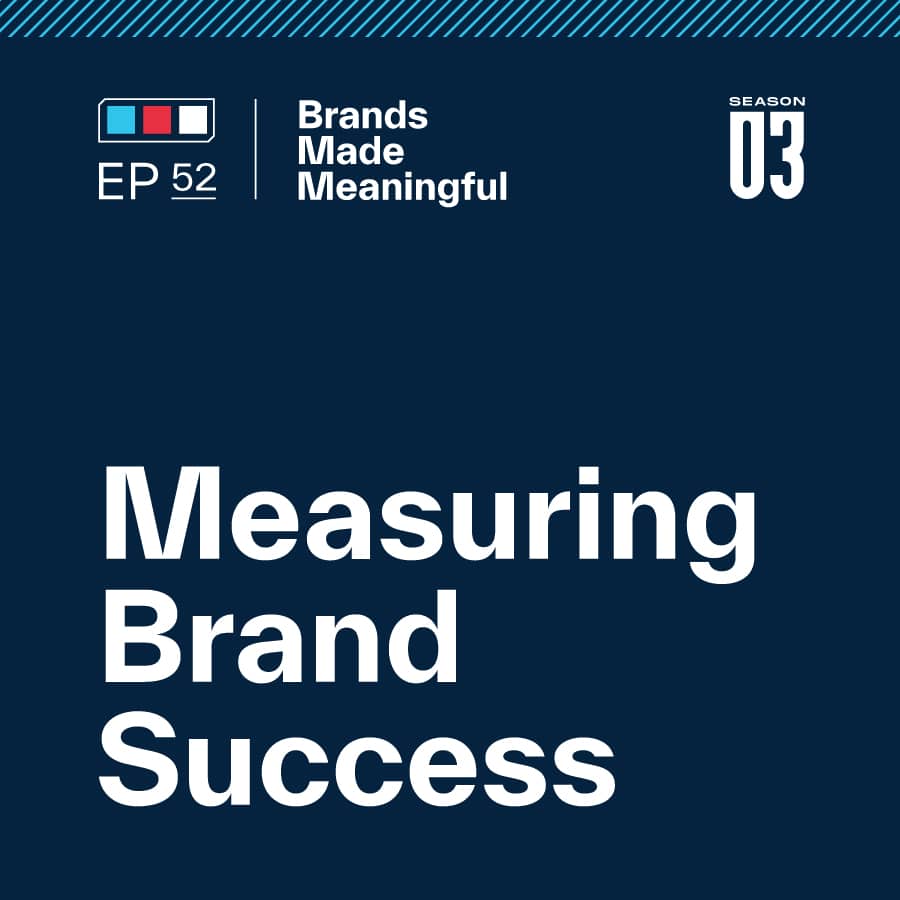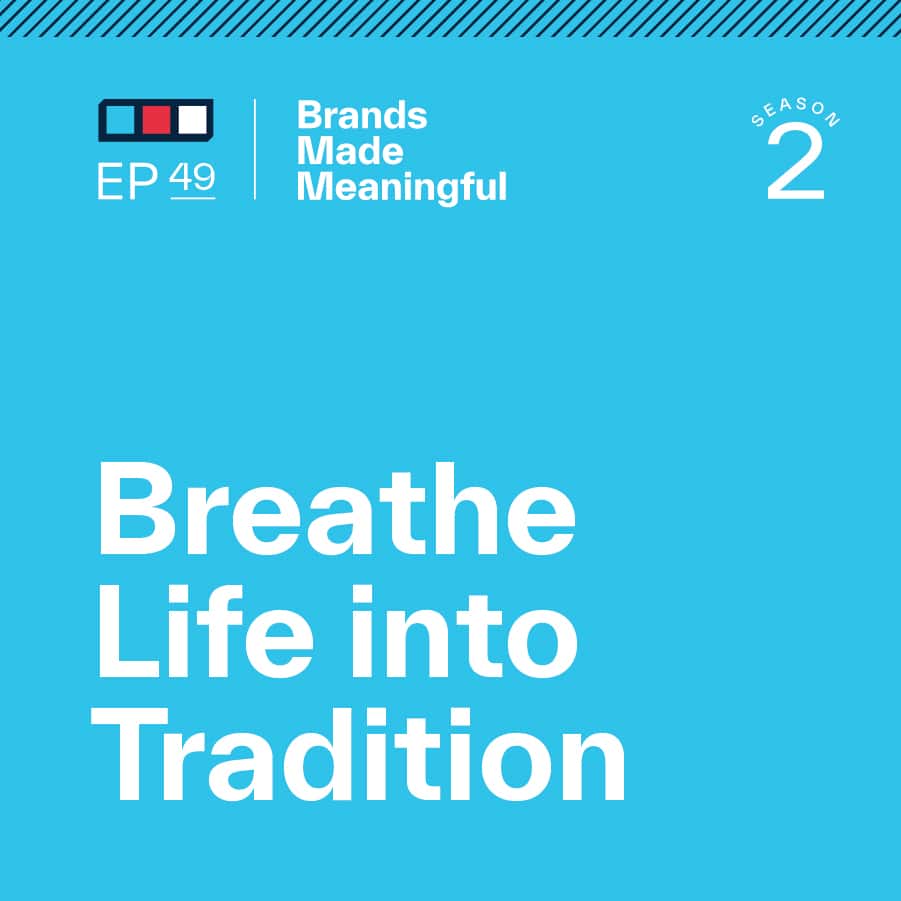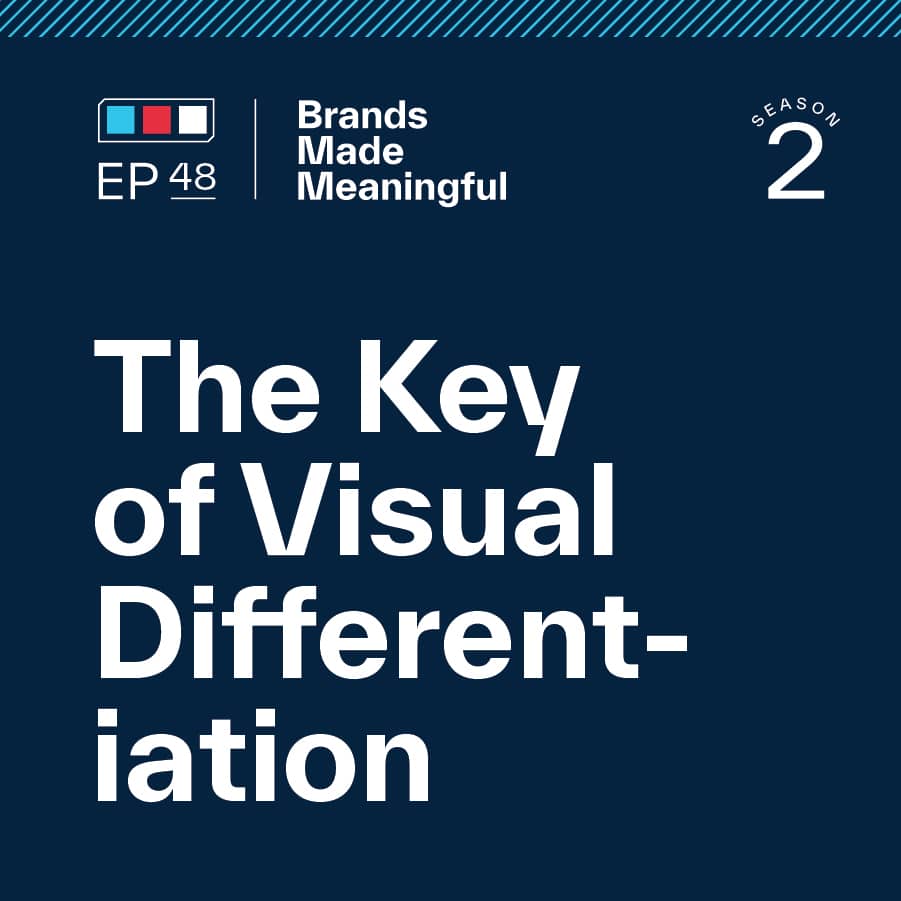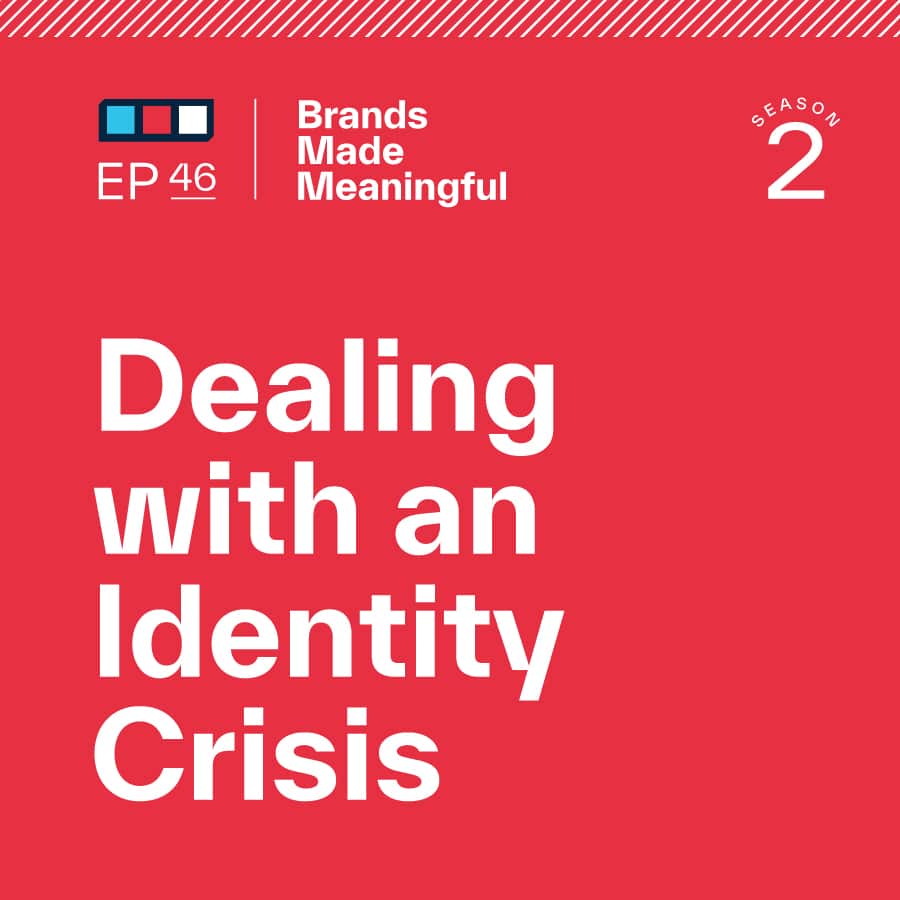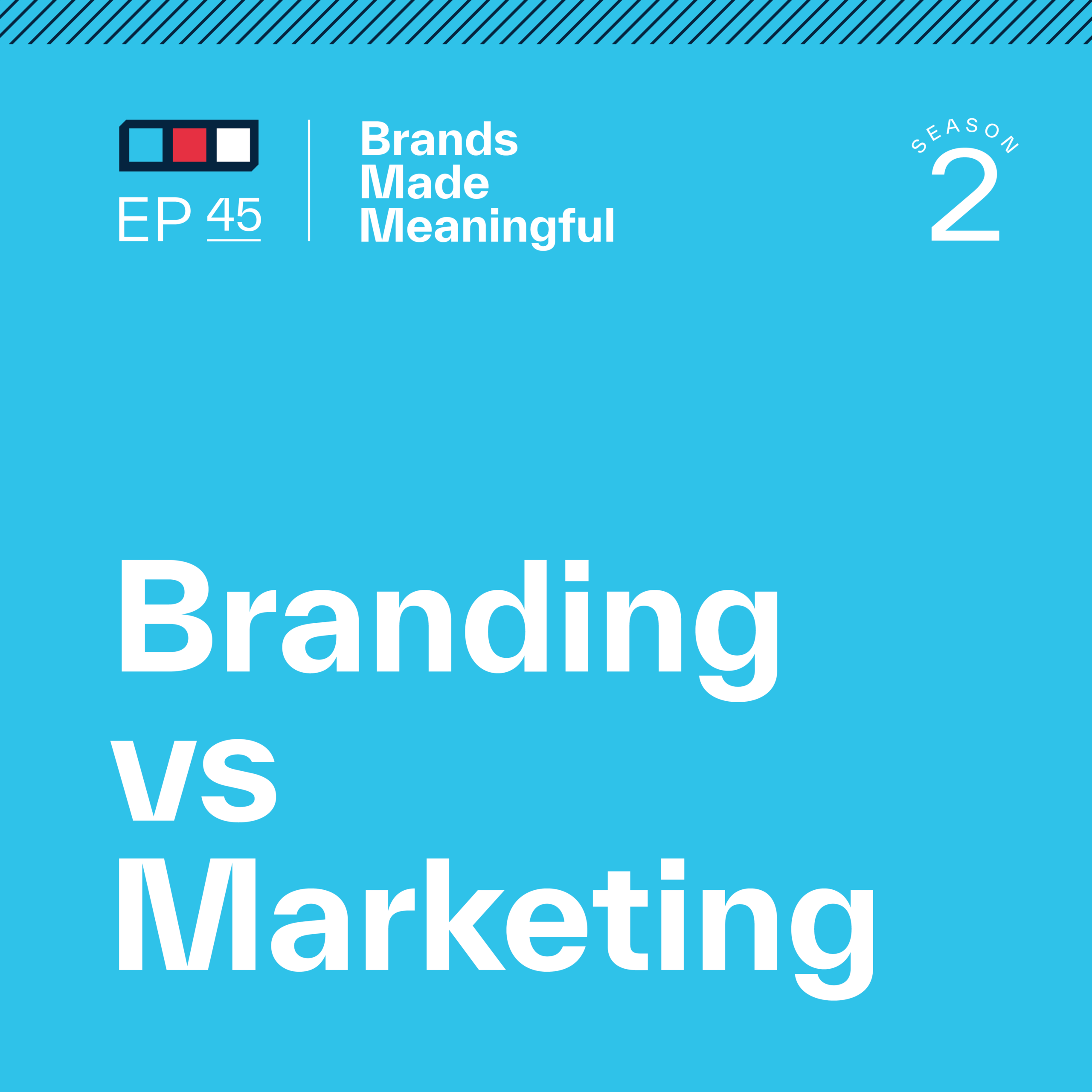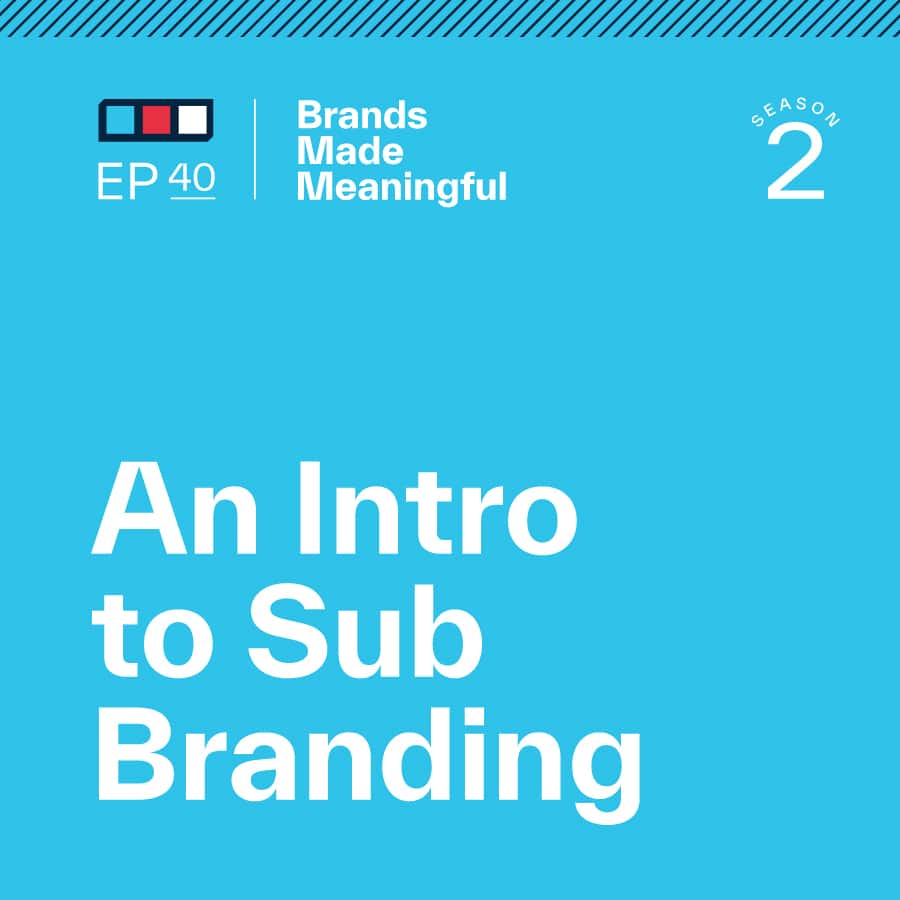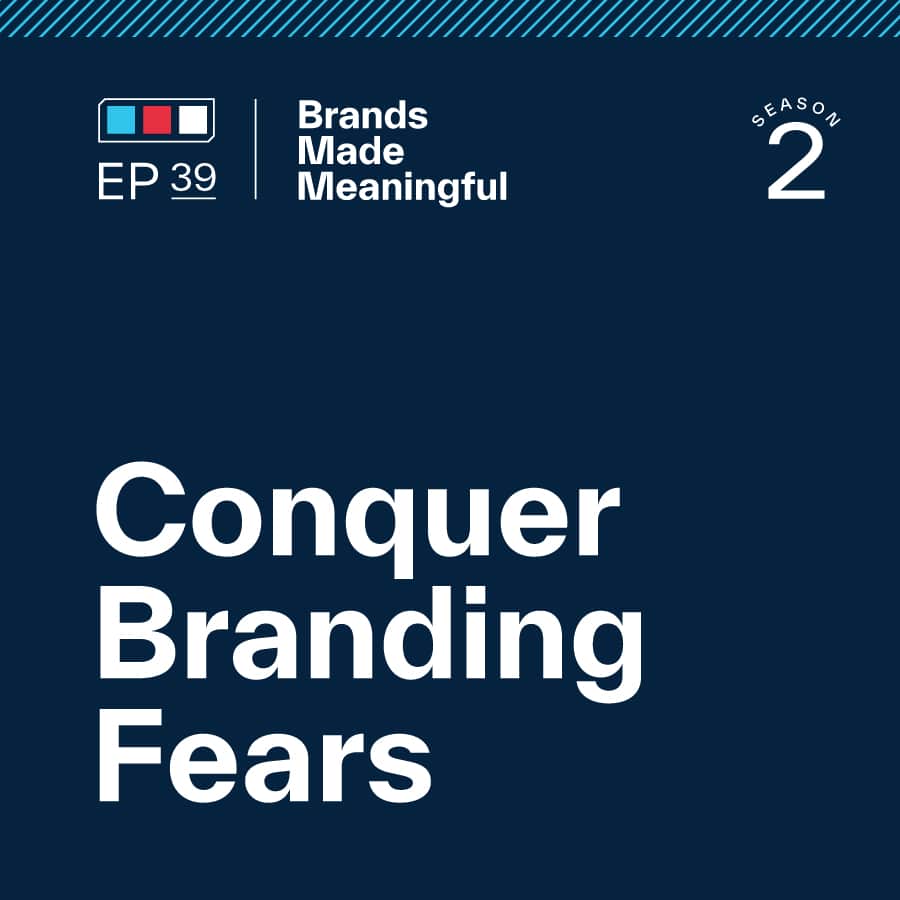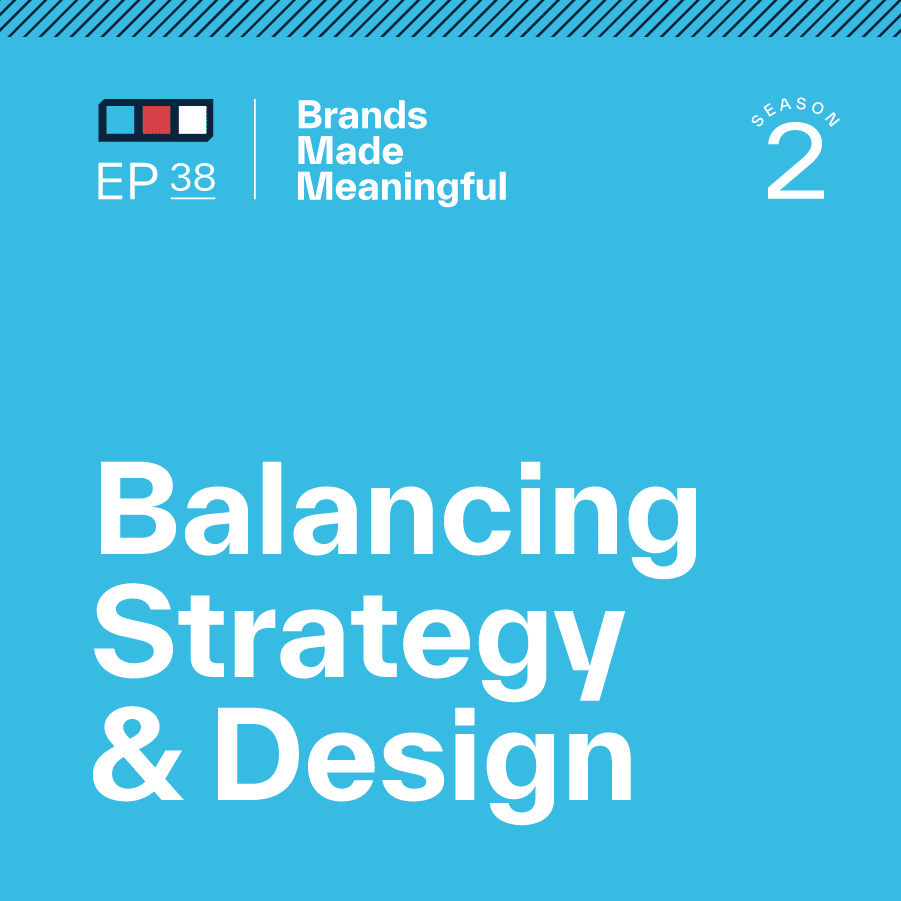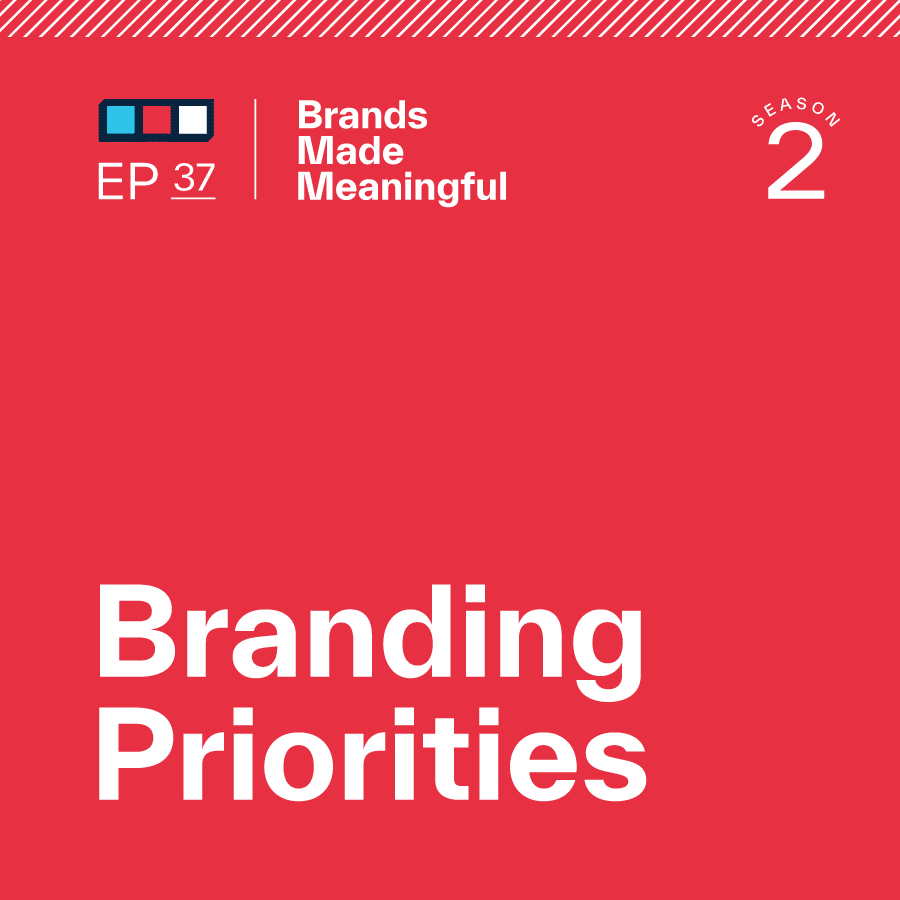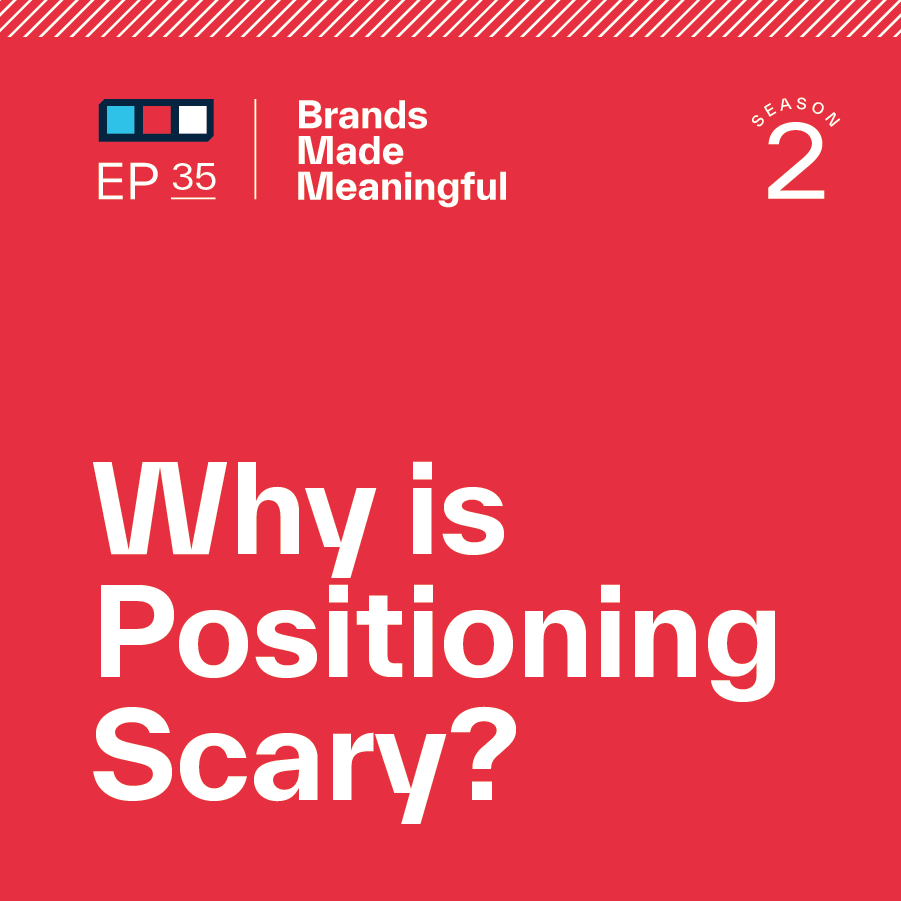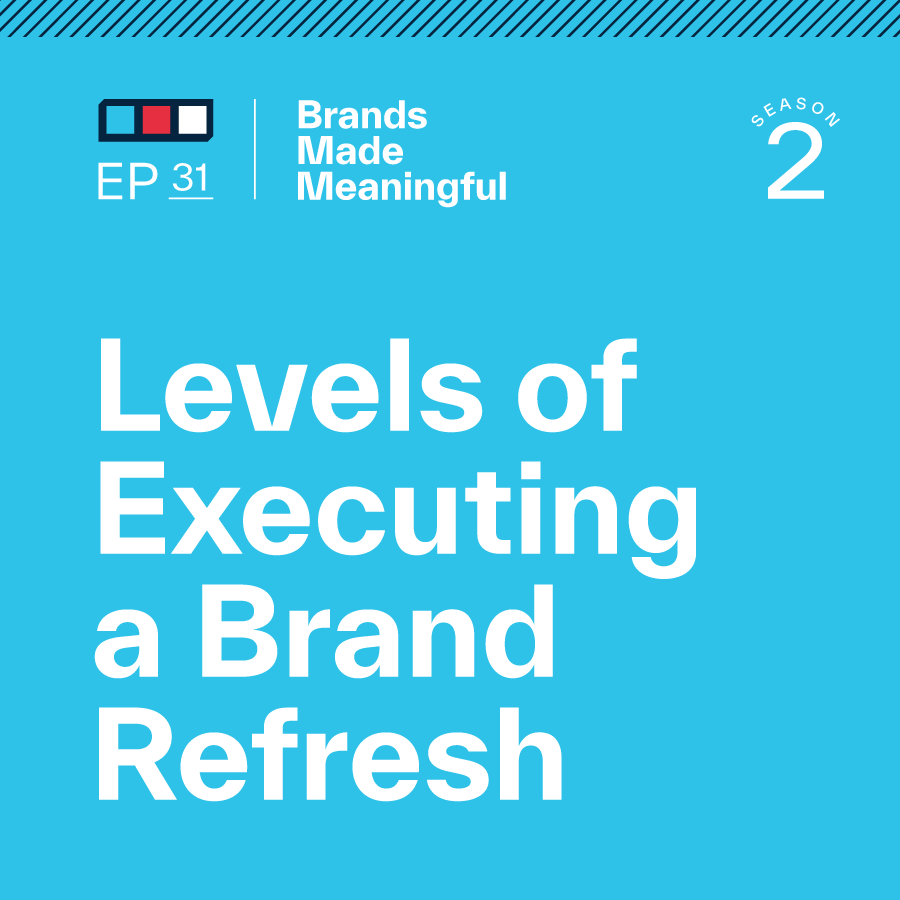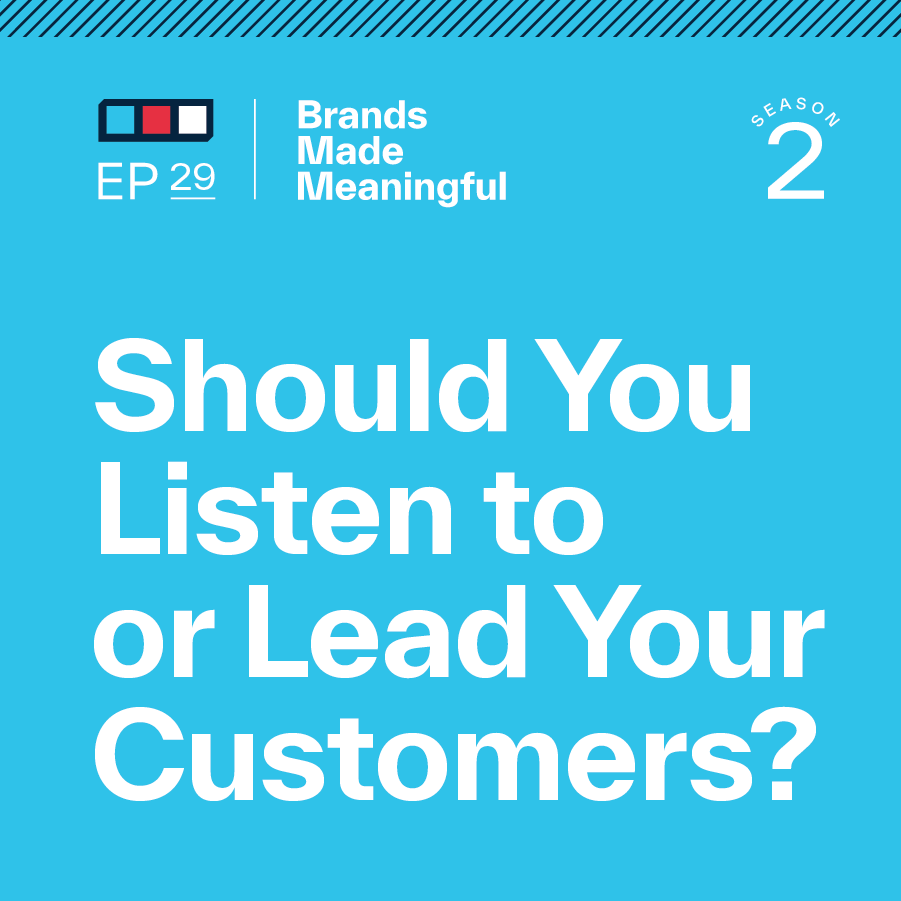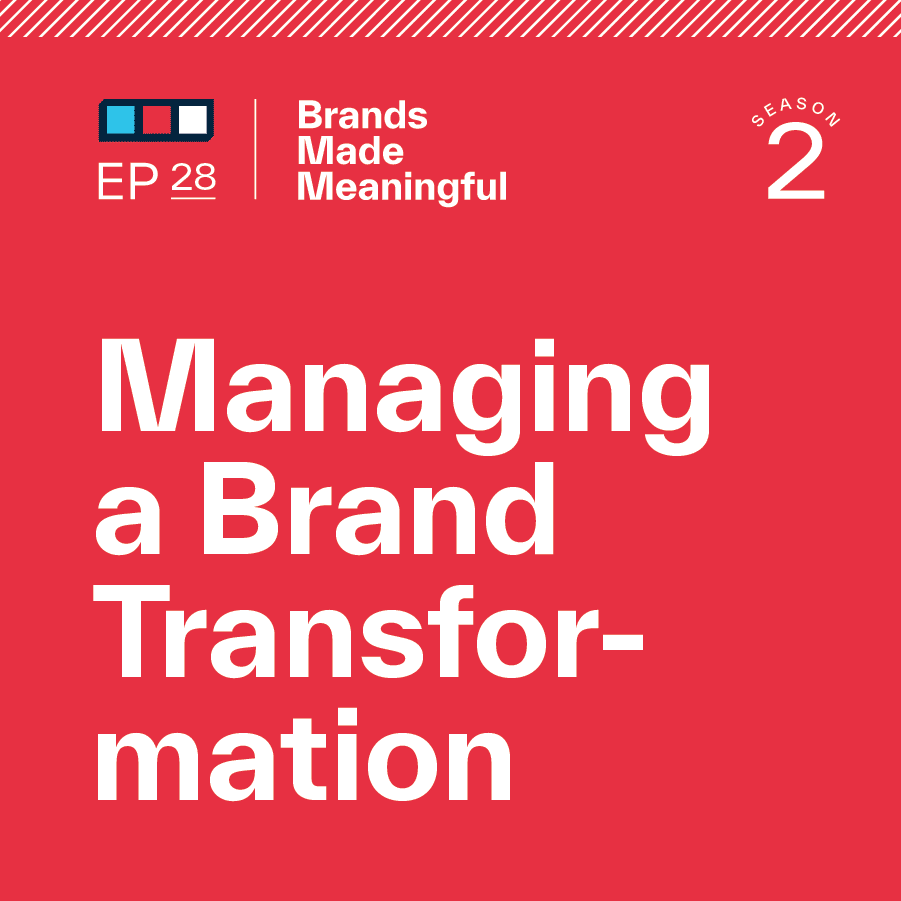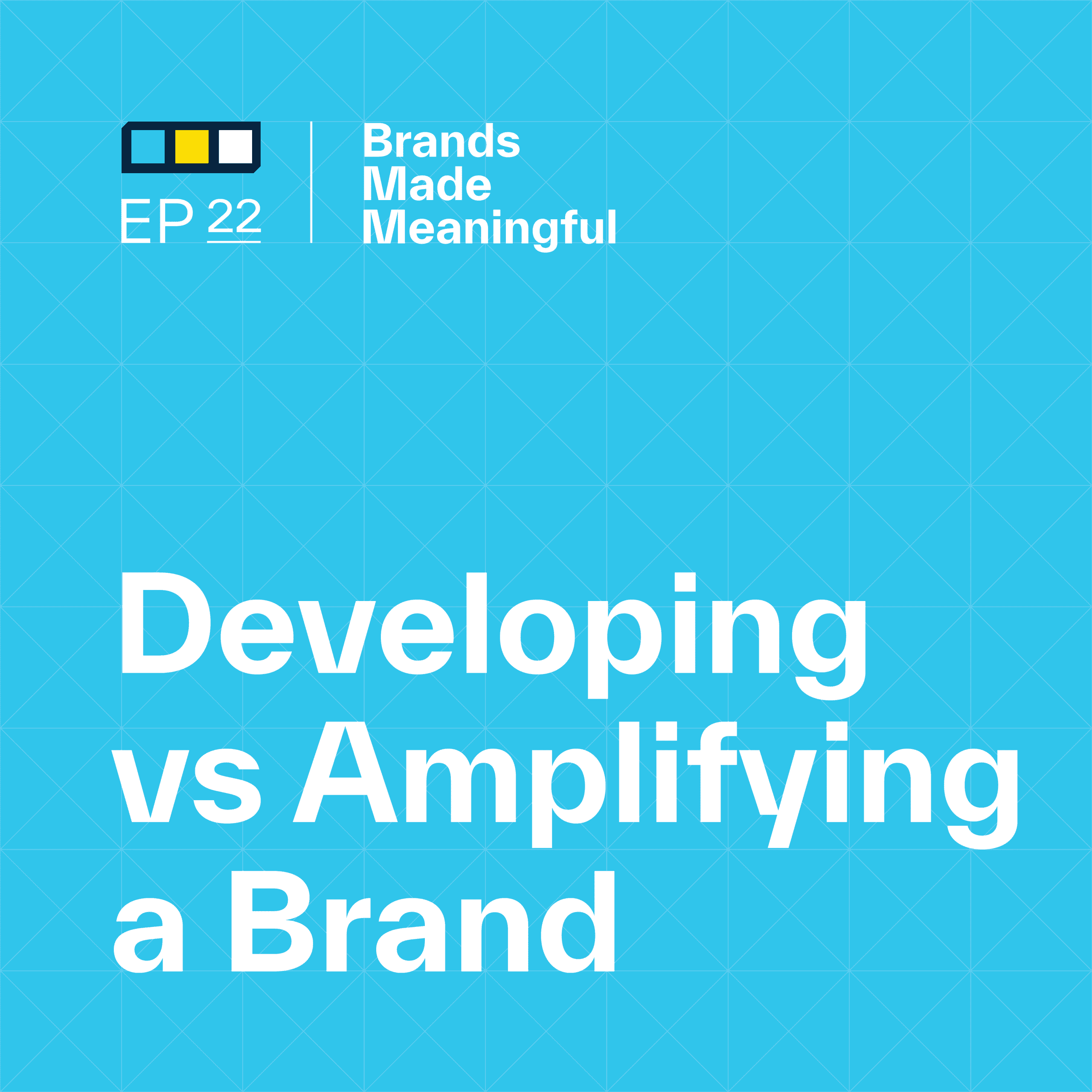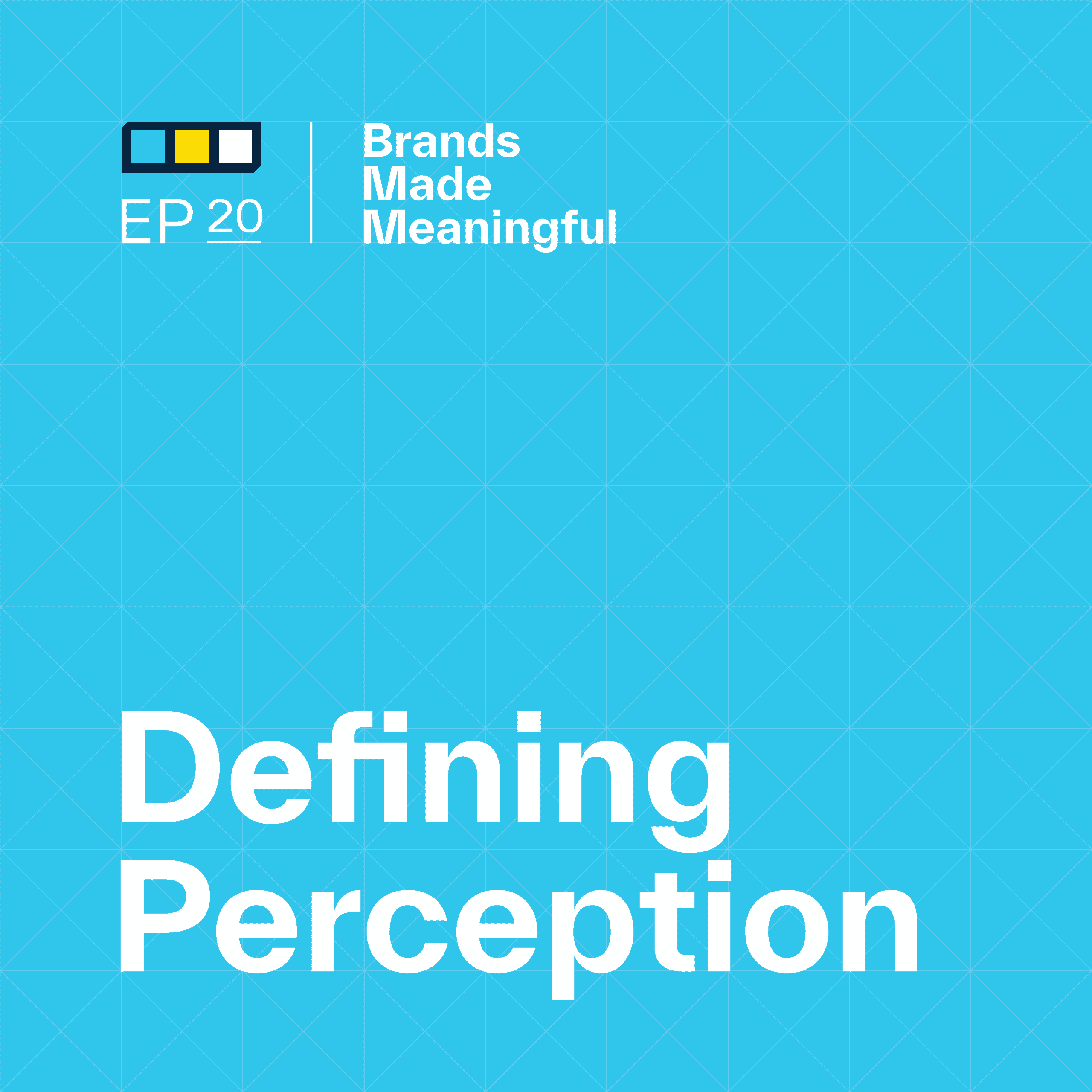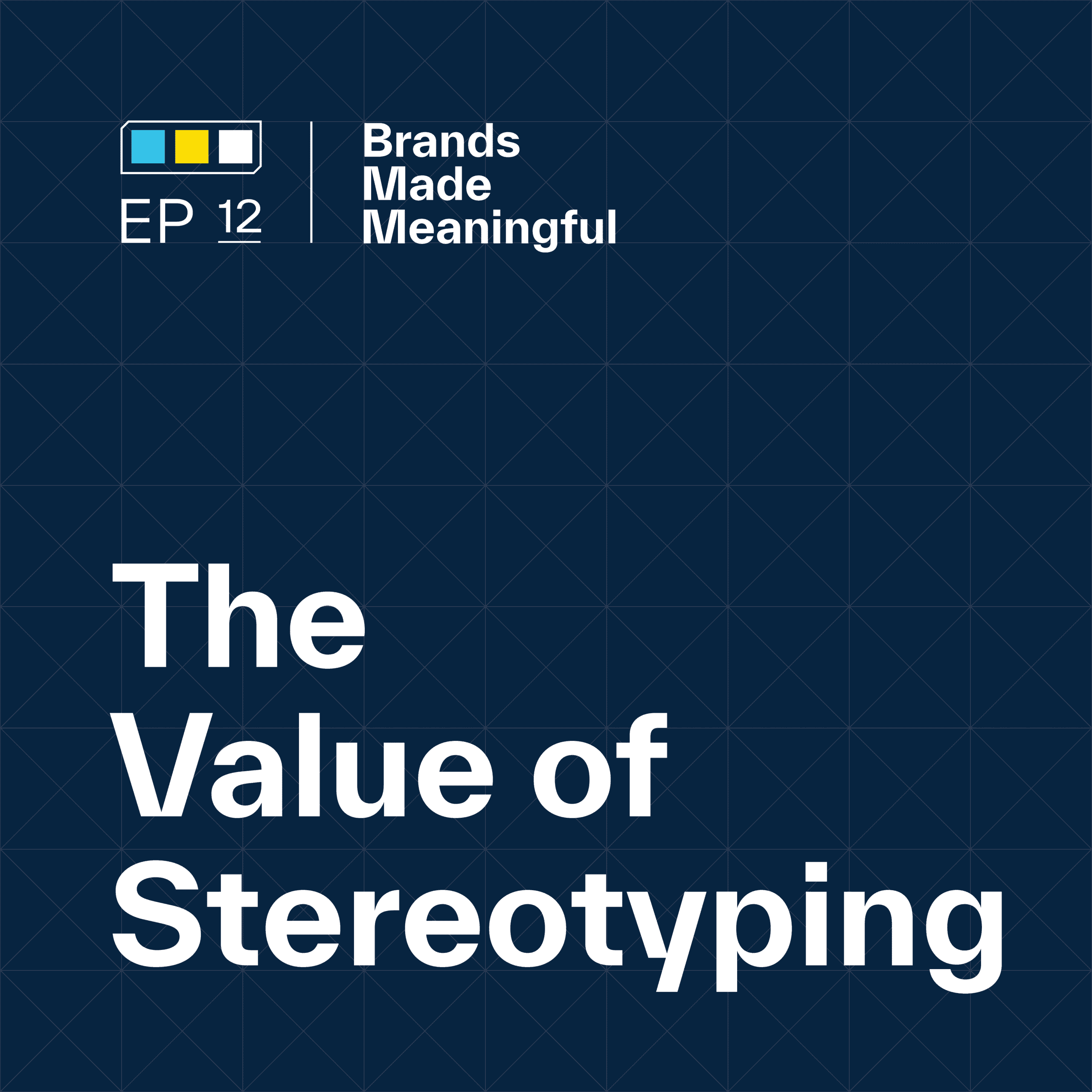EPISODE 78
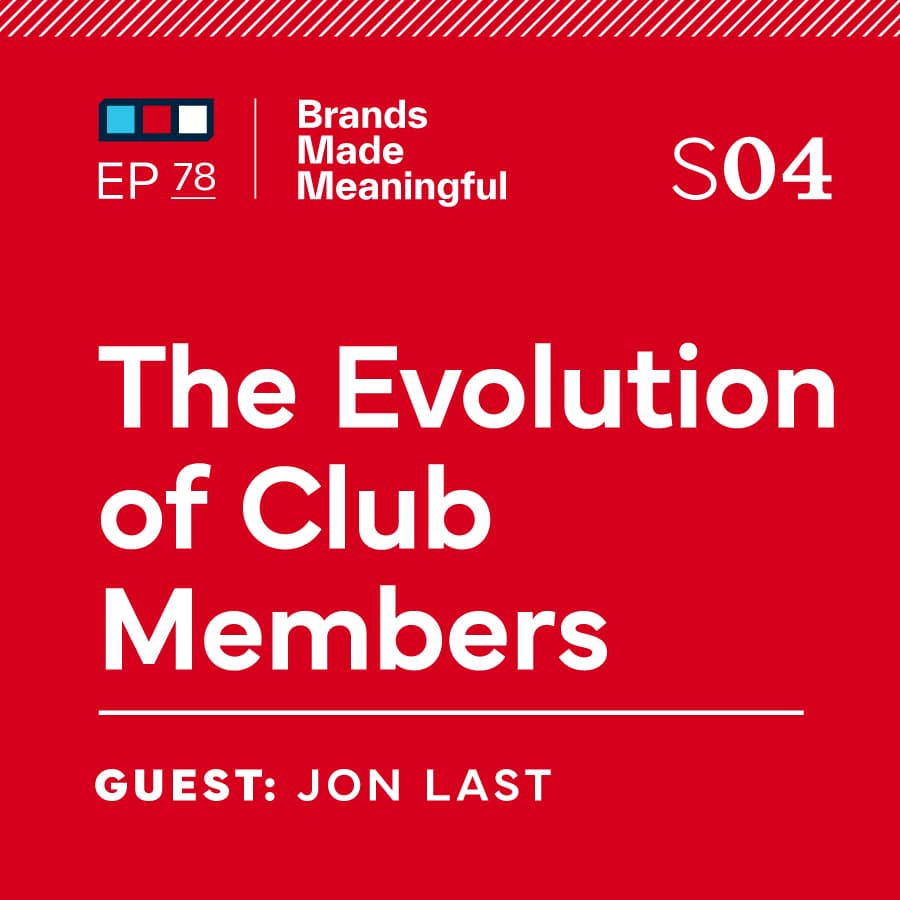
The Evolution of Club Members with Jon Last
Episode 78
Jon Last from Sports & Leisure Research Group joins Derek and Tucker to to discuss the evolution of club members.
EPISODE TRANSCRIPTION
Tucker and I are excited to have Jon Last join us today.
Derek Jon is the president of the Sports and Leisure Research Group. And Jon and I have the pleasure of going back several years.
Expand Full Transcript
Derek I’m not going to say how many years so it doesn’t age us and date us.
Jon We were ten years old when we started working together.
Derek We were children where my team was leading the rebrand for a sporting goods company, a national U.S. sporting goods company. And Jon and his team were testing the product packaging in anticipation of rolling that out throughout the country in quite a variety of sporting goods stores. So that Jon was giving us and the marketing team at this company the confidence that this would be accepted by consumers. And I don’t know if you remember the results of what ultimately happened with that company, Jon, but I would say that together you and I did a pretty good job with our teams.
Jon Yeah, I do. It was on many levels. I still cite the project actually. It was a good example of how good branding can drive all kinds of sometimes unexpected results.
Derek So Jon’s expertise is in research. This is a very Derek-dumbed-down level of explaining it. We’re going to have you give us the smarter explanation. But in gathering data and insights, we found that adding that process to our creative work is critical. Whether that’s surveying interviews, focus groups, or industry research, we like to say that that information and that data make the work that we do meaningful. So, Jon, you have a deep background in this. What drew you to research initially and maybe even specifically to the golf industry, since that’s part of where our interests align now?
Jon You know, it’s funny. At this point, I kind of contemplate that everybody in the research business kind of says they got into it by accident. They didn’t necessarily expect to. That’s in some ways true. I did study it as a graduate student at the Wharton School. But I like to say that what really draws me to research is the pursuit of truth. That’s the word. Because in marketing, we’re telling stories and we’re amplifying differentiating aspects of brands, but it helps to build that from the apex of truth. And I’ve had an interesting pathway to what I do because I started out predominantly as a marketer. I’ve been a chief marketing officer, but one who had a research background, and I always looked at research as kind of that central focus. You start with understanding truth, and from that, you build how you go about disseminating and articulating who you are. And I never realized how lucky I was because a lot of times research departments or researchers are so distanced and they serve as bag carriers, if you will. I kind of somehow got myself that seat at the table, as we talk about, from the onset and said we’re definitely going to do research first. I’ve always been fascinated with what people think. And it’s kind of funny in this time that we’re in now. My undergraduate majors were English and political science, but I was also one of these qual heads who took advanced math and statistical courses and was pretty good at them. So it seemed like it’s kind of rare that somebody could actually tell stories and crunch numbers at the same time. And that’s how I fell into it. The golf piece was just a passion point. I’ve always loved the game and its intrinsic values and qualities. It was at the time really one of the few sports that was a total meritocracy. That’s not the case anymore. But it fascinated me that there were guys out there and gals out there on the professional tours who were barely scratching by a living and is one who always kind of has a certain admiration for underdogs. It drew me to it. And in my graduate work, I did a lot of work on the golf industry and research. And while the rest of my friends were all going to consulting firms and Wall Street and tech and packaged goods, I decided if I was going to market something, it should be something I care about. And I waved my stuff in front of a number of organizations and was fortunate enough to land with the PGA of America. I spent eight years there, built out their full research capability, built out their brand and marketing capability, and took that on a brief hiatus into the cruise industry, which has a lot of similarities to golf, if you will. Very fragmented business, with lots of overcapacity at the time. And relatively niche in who it also served. But then quickly got drawn back in when Condé Nast bought Golf Digest companies, Informed Golf Digest companies, and oversaw a large unit there as a chief marketing officer that had responsibility for database and research, and marketing. And my midlife crisis, if you call it that, was a dog in a company. It wasn’t the Porsche. And finally, I took my ball and ran with it, took a number of my colleagues along, and 16 years later we’re still at it.
Tucker When we look at that, your experience within the industry, the golf industry, or the private industry, it’s interesting because you’ve had such longevity with it. And what I would love to know is those changes, those trends over time, like the way that it’s been different, and the way that it’s been the same. I think we deal with a lot of people in the private club industry today who say the industry is basically the same as it was 20 years ago. But the people who you serve are changing and different.
Jon It’s a relatively fair assessment. As one of the CEOs of the leading club management company says, there are certain immutable qualities in golf that stay. But I would also suggest that, and this may be driven by what you just observed, Tucker, in terms of the people we’re finally NFA’s. Golf’s always been kind of a lagging industry to others. We’re at an amazing time right now. One is because we’re seeing a certain transition between generations. And secondly, as a lot of our research has revealed, we’re finally walking the walk that we’ve tried to at least give lip service to for 15, 20 years to become a more democratized sport. And that in its own right has not only fueled a huge surge in participation that the industry has been enjoying pretty much since the onset of Covid, but it’s also making other derivatives and forms of the game acceptable as ways of engaging in and participating in the sport. And that in turn, has opened up a whole new audience with a whole different set of needs. And it’s forced private clubs in many instances to make those adaptations. Obviously, it presents great opportunities for firms like yours and ours because it’s all about understanding what people want and what people derive from that experience. And that has to be brought forth in the brand that’s created around it and the community that gets built because that’s what a private club is. It’s a community, it’s a cocoon, as our research has shown, it’s an oasis from a life right now that’s pretty hectic. We do a monthly study that we used to call the back-to-normal barometer. Now it’s called the Consumer Optimism barometer. And one thing that we continue to see get amplified is that golf is this oasis. It’s a way for people to escape from the pressures of day to day. And you better create an environment that facilitates that and recognizes that the definition of that oasis isn’t always cookie cutter, as it may have been 20 to 25 years ago.
Tucker A lot of people like to look at an industry as a macro lens of saying, Well, you know, the people in California want the same thing as the people in Florida that want the same thing as the people in New York. But that’s just not true. From what we’ve found, is that communities, to your point, can even differ from this community here to down the road want completely different things even though we might be in the same area. And so what we really struggle with is can clubs be focusing on the demographics of their members or the psychographics of their members that bring them together across values and needs versus just who they are on a statistic.
Jon Yeah, demographics have never been enough. I mean, when I first got into this, even in my PGA days, it was very common practice to define golfers by avidity. You had your casual players, you had your core players, or your avid players. And we defined pretty early on through attitudinal segmentation work that it was very different. I’ll give you a perfect example. Let’s take perhaps a bit of a stereotypical CEO of a large company who can be very engaged in golf but may not play that much because he or she is really busy. So when he or she goes out to play golf, they may be looking for an experience that is very high-end and reflective of what you might surmise to be just the demands or desires of somebody who’s playing 75 rounds a year. And that’s not always true. So that’s something that everybody from equipment OEMs to clubs need to be mindful of. And you mentioned something a moment ago that’s become a big hot button. We do an annual study called the Golf Business Poll Study for the National Golf Course Owners Association. In fact, it is going to be released around the PGA merchandise show and the Golf Business Conference at the end of January. And within it, we continue to espouse the term hyper-local, which defines the fact that golf facilities today, as they seek to position themselves, as they seek to attract and retain members, need to be mindful of who their competition is. And it may not be, as you said, reflective of every other private facility in their state or even in their city. We’ve developed a process called culture audits that we have worked on and talked to the Club Managers Association about on numerous occasions because there’s a very different type of environment at each club that will serve to attract not only the current members but the future members. And in a point that I know Derek made when we were talking about this in another vein, even the retention of labor because labor retention is a huge challenge. It’s been the number one challenge for facility owners and operators over the last three years. So how you adapt to the changing values of those that are going to be part of your team has a huge bearing not only in your ability to retain them and deliver what these members want but to create and conform to that culture that members demand.
Derek Jon, we came across a business journal article recently that published some data on the dramatic age shift of incoming club members. I think the article that they published specifically, they referred to them as potential members or visitors or people that were considering joining clubs. And I think another report that the McMahon Group published said that the average age of people joining private clubs today is something like 43 or 44 years old across the country. My first question is, does your research and data agree with that? Because my second question is, if that is the case and if clubs are becoming so much younger, how is this shift influencing the way that clubs should be thinking about their culture and their offering and their identity as they look to attract these 40 and 50-year-olds, whereas the majority of their membership might be 60 and 70-year-olds.
Jon The data is definitely trending younger again compared to other leisure pursuits and activities. Golf is not a 20 something game. It’s a game that still in many cases is expensive and has certain barriers to entry, at least at the high end private club level. But we have seen the average participant age decrease in what is a statistically meaningful way. I think what it poses, of course, in something that we’ve kind of had our finger on for a while, is a need to provide a broader definition of what the club means to that individual. It may have been okay in the past to simply be 18 great holes of championship golf. And today it revolves around so many other activities and programs and amenities. And I think it’s incumbent upon any club to assess where they are and where they want to go, which obviously is predicated also by their competitive set, to make sure that they have that infrastructure. In our NGCOA work, we consistently track what capital expenditures are going towards, and what the priorities that both facility owners and members are looking for. And now you’re seeing things like food and beverage and a whole rediscovery of that asset as a huge driver of capital improvement. Of course, anybody who’s played at a Top Golf recognizes that gamified ranges and screen golf have almost become table stakes right now. In fact, I’ve spoken recently at a couple of conferences about some data that we have. There’s just a large proliferation of investment going on both at the private and public facility world in creating these environments because they one, expose a population that may not typically have discovered golf to come and access the game on terms that are a little bit less intimidating and certainly more welcoming than just being thrown into the fray of playing a traditional round. So not only does it become a springboard, but it becomes a derivative that expands the accessibility of some of these facilities to this broader, more democratized market that we talked about before. Now, at the risk of contradicting myself, you can’t lose your soul and you can’t necessarily turn a battleship in five minutes. So one of the other challenges that the industry has faced that we see and talk to people about consistently is just how do you embrace this new evolutionary trend while at the same time not alienating the core customer that still historically has spent more and at least at this point has greater lifetime value. We talk a lot with technology becoming so incumbent in how facilities need to better manage themselves. We talk about the struggle between being more high-tech but remembering the fact that golf as a game, as an industry, has always benefited by being extremely high touch. And I think the more progressive facility operators recognize that. So they’re channeling these technological evolutions to help them more with behind the scenes type back of the house operations that free their staff up to be more high touch.
Tucker When we talk about the next generation and all of these things, exactly what you’re kind of cluing in at as just table stakes is what you had said. And that is an amazing way to look at it. We’ve talked to other people within the private industry and looking at table stakes used to be we have an offering and it’s private. That’s great. And now table stakes are shifting to we have an amazing golf course that’s turning into table stakes, whereas many of these clubs have that as their core identity. That’s who they are. We have an amazing golf course. You should join here. And that younger generation becoming so much more sophisticated with it and how they believe their affinity for things is so much deeper than maybe that past generation. We’re seeing a big change in just how people treat identity on who I am and tying myself not only to the private club for its offerings, but for the identity that it helps me create for myself.
Jon Obviously, there’s always been a certain panache and prestige and social mobility associated with private clubs, and there’s certainly a lot of them that continue to deliver that. I almost think, though, that there’s also a recognition and an acceptance that, you’re absolutely right, a great golf course is kind of the starting point, but the definition of great may not be as homogenous as it was 20 years ago. I think part of the issue is, I mean, if you go back to when golf boomed after Tiger Woods and then had a real struggling period, there was just this rush to build and develop these monuments, if you will, these championship caliber golf courses that were incredibly difficult and incredibly long. And that certainly has its appeal. And your traditional member, your older member, somebody who is more skilled at and more experienced in the game, very well seeks that out. But I believe that part of what golf has been enjoying is a recognition that a great golf experience doesn’t have to be that and isn’t that for all people. We’ve been very involved. We do a lot of work with the United States Golf Association. We were very involved in their distance initiative which is a big effort towards understanding how to preserve the values of the game and how to make the game more enjoyable for everybody. And I’ve become this huge proponent of proper tee box selection. We’ve done this research, we’ve done it observationally. I mean, you go, you see the stereo, I’m going to play from the men’s tees. Well, stop calling them the men’s tees. Call them by a color or a name because the reality of it is that 90% of golfers are not able to hit the approach shots that the architect designed the course to afford with how far or not as far as how they hit the ball. And maybe I’m just kind of rebelling because, you know, I don’t hit the ball as far as I used to, but I’ll move up and it’s a great experience. We actually had a research project where we forced better players to play from forward tees. They had a great time because now all of a sudden they were hitting wedges where before they were hitting middle irons into greens and it was just a whole different type of test. So, an acceptance and a promotion of different experiences, I think is a way that a progressive thinking, private facility can meet the needs of members where they are as opposed to just conforming to the prior definition of challenging.
Tucker And that diversification around the type of member is really interesting for us to say a club right here could be for this type of member and the club across the street could be for a different type of member with a similar base offering. And I think that’s what we’re seeing a lot, is on paper, the offerings are very, very similar. But when you experience them, they may have the same technical things, like they have 18 holes and they play maybe the same distance and all the other stuff. But the way that they play and the experience that you have can be so different that it actually attracts a different person to that experience.
Jon Yeah. I mean, I think when we do these culture audits, you have to think about everything from what the vocations of the members are and what their goals are for the utilization of the facility, both in terms of amenities and in terms of the people in the community that they seek to foster and build. You know, it even goes down to politics sometimes. Clubs look at themselves as being a breeding pot of that, but you’ve got to be comfortable with the people that you’re spending your social time with. We found certain clubs develop reputations that may be right for some, but not for others. And I think it’s important, if you’re a prospective member, to know that before you pursue that membership. And if you’re there, obviously, if this is going to be your oasis, if you’re going to spend a significant amount of money and time, you better feel comfortable about it. It’s funny because a lot of times people joke around and you get people like how can you justify spending all that money with initiation fees and annual dues to belong to a club? And I hate to admit, if you average it out, I probably played like 60 or 70 rounds this year, which is ridiculous. I’ve never played that many rounds in my life, but I’ve become the king of going out late in the day and, you know, zipping around in two hours. But the point is, even with that, I’m probably spending averages of hundreds of dollars per round, which you could go to another golf course or a public access course and pay a quarter of that. Why do you justify it? Well, because every time I go there, I feel like I’m on vacation and I spend a lot less than if I had spent nine months of my life on vacation.
Derek But the clubs that we see that are the most successful are the ones that have really intentionally decided who they are for and what their membership is going to be about. And through that culture audit that you mentioned are very thorough in not only adding members, but also adding staff that create and continue that culture that really defines them and their story. And so for us, that is a core part of what we would refer to as branding. That component is fascinating to me.
Tucker And the thing that I think we see is the ones that don’t define that and they try to be for everyone and say, Well, we have half of our membership really wants this, the other half wants this, and we can’t do both so we’re just going to try to do everything from a little bit. Those really struggle to make headways into establishing themselves as unique and different. How do they really stand out in the marketplace if they’re just trying to be for any type of member?
Jon Yeah, I think that’s fair and I think that’s very reflective of some of what we see. The more forward-thinking clubs define themselves not only who they are but who they’re not. And it’s interesting, you know, as a researcher, there are certain folks out there, and I’m not out here to bash competitors, but I mean, there are certain kinds of quick and dirty ways of assessing satisfaction or member attitudes. And I’m more involved in doing things that are much more thorough and thoughtful. That’s what our firm is about. Because I think you can very easily get convenient samples that become the loudest voices as opposed to representative voices. And I think you also can limit yourself by looking in surly. You’ve got to look around you too. And looking around you too isn’t just the club down the street, but it’s other means through which to spend that discretionary time and that discretionary income. And interestingly enough, sometimes it’s the discretionary time that’s much more important. I’ll share an interesting story with you that I’ve been telling for quite a while. It’s a really cool one about what’s important to golfers and driving their engagement. And this comes from a one-on-one depth interview that I did out in San Francisco a number of years ago. And I’ll ask you guys – you’ll probably get this right. If people were asked why don’t they play more golf, what would be the two reasons that hold them back?
Derek Takes too long and it’s too expensive. And it’s too hard.
Jon But those those are the two that you hear about. So, you know, as a researcher, you get tired of that because they’re not really actionable, right? I mean, I can’t put more money in everybody’s pocket and I certainly can’t give them more time. Though there’s this interesting sidelight. Covid and the whole push to work from home has actually brought that dynamic a little closer to being flexible. But go with it. So those are the two things. What do they really mean? So I was interviewing this guy in San Francisco. It was clear from the early part of the discussion that this person had money and time. He had invested in season tickets for the Giants and he had a vacation home in Lake Tahoe. And I asked him why he doesn’t play more golf. And, of course, he gave those two answers. I wasn’t going to accept that. I probed them further and said, Wait a second. You’ve found the time and money to do those things. Why not golf? And his answer was the most provocative thing we heard in the entire research. It went on to be something that had the highest level of agreement and subsequent quantitative projectable research that we did. What he said was, There are no guarantees in golf. And that means he could spend all the money and all the time he wants, but he isn’t necessarily assured of an experience that’s going to be consistently delivered. And we preach that mantra to a lot of our clients and help them to understand what that is.
Tucker But that idea that you can’t make them play well is something I’ve heard from the staff at some clubs. I can’t control what they do out on the course. I can control how they feel when they come into the clubhouse though. And so that level of consistency is interesting as you look at the offering. Looking at an offering from a private club standpoint as golf is you’re letting the game dictate your offering versus building an offering that has that as just a very small subset that could, you know.
Jon Work or encouraging forms of play within that offering that are more conducive. The club that I belong to, I mean, my wife just started playing after 30 years of not playing. She’s not going to go out and play the same tees that I am, so I’ll go up with her. She’s going to participate in events at the club and programs the club has that make her feel welcome, whether it’s playing from a shorter distance or scrambles or playing kind of unique derivatives. We have an event every year where we use glow in the dark golf balls and play at night and everybody hits off of the same tees. It can be fun and golf is supposed to be fun. A lot of times, you know, particularly private clubs, they’re built by people who are competitive. We’ve done a lot of work with the USGA on the handicap system. There are 47 million people, according to the National Golf Foundation, who experienced golf at some level in the past year, and more of them actually experienced it off a golf course than on it. But, you know, people who have a competitive streak and have a handicap or a small subset of that, traditionally, that’s been what every golf facility has been about. I’m not saying you throw it out. I don’t want to be hypocritical. I have a handicap. I enjoy playing and trying to play well. But there’s nothing wrong with experiencing it otherwise. And it goes back again to knowing your customer, right? Knowing what they want and making sure that they feel comfortable wherever they’re playing to pursue the game in that way. So I would almost wonder about the guy or the professional who said, Hey, I can’t control how they do on the golf course. You might encourage them to try something a little different.
Tucker As we wrap up here, I think that the big takeaway that we’re just talking about right now is not only to make a decision on who that is, understand who your your culture is, and understand who fits into that, but make a decision around how you move forward on that culture and say we’re going to find ways to make it feel more like X versus Y and be really thoughtful around that. And that’s how you’re going to move your club forward. Like you had said, it takes a long time to steer a battleship, but that idea that you can start making decisions now that really helps change the course of that versus saying we’re too far gone, this is just a done deal.
Jon Exactly. And you can think about how through some of the more broader population trends and cultural trends that may look ten, 15, 20 years down the line. And those are going to be the leaders of your club in the future.
Derek Jon, thanks for joining us today. We’ll keep our football conversation offline. We won’t bore the the listener with that, but really love your insights. I think we could talk to you for an hour. Maybe we can do this again down the road because I’ve got a whole list of follow up questions.
Jon: So much appreciate you having me on and great to see you again. And, Tucker, great to talk with you.
Derek Awesome. Thank you.
Tucker Thanks, Jon.
Derek Sussner is a branding firm specializing in helping companies make a meaningful mark, guiding marketing leaders who are working to make their brand communicate better, stand out and engage audiences to grow their business. For more on Sussner, visit Sussner.com.
More Episodes Like This
Reclaiming Reputation Through Brand RevitalizationEpisode 85
Derek and Tucker discuss the potential that a branding initiative can have to restore a club’s reputation.
Branding The Club with Don KovacovichEpisode 84
Don Kovacovich, GM of The Club at Golden Valley, joins Derek & Tucker to discuss the impact that rebranding has had on his club and the opportunity it presents for other clubs
Changing a Club’s Membership ModelEpisode 83
Derek and Tucker discuss key considerations and challenges when changing your club’s membership model.
Connecting a Club with its Story with Jackie CarpenterEpisode 82
Derek and Tucker are joined today by Jackie Carpenter, author of People First.
Branding a Club AnniversaryEpisode 81
Derek and Tucker discuss the unique opportunity presented by milestone and anniversary dates for private clubs.
Private Club Storytelling with Ricky L. Potts, Jr., CCMEpisode 80
Derek and Tucker have the pleasure to speak with Ricky L. Potts Jr. about how powerful storytelling can be for your club members.
Opportunity in Club Facility RenovationEpisode 79
Derek and Tucker discuss pivotal key moments in your legacy and how to transform your story through renovation.
The Evolution of Club Members with Jon LastEpisode 78
Derek and Tucker are joined by Jon Last from Sports & Leisure Research Group to discuss the evolution of club members.
Member Branding vs. Product BrandingEpisode 77
Derek and Tucker discuss the challenges their client's have moved through when approaching differing styles of branding.
The Role of a Private Club's LogoEpisode 76
Derek and Tucker take a look back on private club logos they've designed over the years and explain the strategic reasons behind their choices.
Club Brand GovernanceEpisode 75
Derek and Tucker divulge the steps to evolving your brand while retaining your core values.
Seasonal Member MerchandiseEpisode 74
Derek and Tucker take a look at crafting specific merch to celebrate landmarks and special times of the year.
Who is Sussner?Episode 73
Derek and Tucker take a break from talking shop to talk about who they are and what they stand for.
Club Identities Beyond AmenitiesEpisode 72
Derek and Tucker discuss what it takes to stand out in unique ways for your club.
Little Things Mean EverythingEpisode 71
Derek and Tucker take a look at the often missed and easy to overlook.
Build Flexible Brand SystemsEpisode 70
Derek and Tucker break down the building blocks for long lasting branding.
The Club at Golden ValleyEpisode 69
Derek and Tucker take a close look at one of their recent rebrands.
When to Launch a Club RebrandEpisode 68
Derek and Tucker break down how to find the perfect timing when launching a club rebrand.
Steps to Launching a Club RebrandEpisode 67
Derek and Tucker break down the steps to take and the reasons why you should consider a club rebranding.
Brand Marketing vs. Brand DesignEpisode 66
Derek and Tucker define the line between marketing and design and how they intersect to inform one another.
Building Brand GuidelinesEpisode 65
Derek and Tucker show us how to build infrastructure guidelines to unify your brand experience across the board.
Club Identity SystemsEpisode 64
Derek and Tucker cover what Identity Systems entail and how to discern between internal and external methodologies.
Navigating Branding With a BoardEpisode 63
Derek and Tucker bring clarity to uniting your company under one cohesive vision.
Putting a Committee TogetherEpisode 62
Derek and Tucker assemble your need-to-know facts when putting together your committee.
The Guiding Principles of Private ClubsEpisode 61
Derek and Tucker go over the top ways private clubs can find the balance between pleasing old members while attracting new ones, all while making moves towards the future.
How Color Affects PerceptionEpisode 60
Derek and Tucker cover how to best convey your business with color.
Brand EcosystemsEpisode 59
Derek and Tucker break down how to craft effortless experiences when considering your brand as a whole.
6 Types of Brand TransformationEpisode 58
Derek and Tucker dive into 6 distinct types of transformations for a wide range of brands.
Tournament Branding For ClubsEpisode 57
Derek and Tucker discuss designing and delighting your club members with tailored events.
Brand Promoters & DetractorsEpisode 56
Derek and Tucker discuss how high level promoters increase your NPS and how to turn the tides on your detractors.
The Loudest Voices in the RoomEpisode 55
Derek and Tucker talk about gathering feedback while prioritizing every voice.
Determining A Primary AudienceEpisode 54
Derek and Tucker discuss if and when you should be honing in on your audience vs. casting as wide a net as possible.
Branding For ExclusivityEpisode 53
Derek and Tucker discuss the intricate process of naming your brand.
Measuring Brand SuccessEpisode 52
Derek and Tucker discuss how we measure our success in branding and a few key KPIs that help us understand our impact.
Branding For ExclusivityEpisode 51
Derek and Tucker breakdown how brands can create the perception that they are exclusive and only for a certain type of consumer.
What Makes A Brand SurprisingEpisode 50
Derek and Tucker break down the Sussner formula that we believe leads to a surprising brand.
Breathe Life Into Brand TraditionEpisode 49
Derek and Tucker discuss the intricacies and common pitfalls of branding for Private Golf Clubs.
They Key of Visual DifferentiationEpisode 48
Derek and Tucker break down the importance of differentiating your brand on a visual level.
Branding For Private GolfEpisode 47
Derek and Tucker discuss the intricacies and common pitfalls of branding for Private Golf Clubs.
Dealing With An Identity CrisisEpisode 46
Derek and Tucker breakdown how to identify and remedy a brand's identity crisis throughout thoughtful and intentional brand management.
Branding vs MarketingEpisode 45
Derek and Tucker discuss the differences between Branding and Marketing and how to make the two compliment each other.
Build Your Brand's FoundationEpisode 44
A brand's foundation is a critical element in being successful in the long-term.
Building a Constructive Branding ProcessEpisode 43
Derek and Tucker break down the steps required to build the most constructive and meaningful branding process.
What Makes a Brand Relevant?Episode 42
Relevance is a key piece of a brand's identity for creating clarity and connection.
Your Right to WinEpisode 41
Derek and Tucker discuss the “Right to Win” and the odds of your brand's success within your target market.
An Intro to Sub BrandingEpisode 40
Derek and Tucker discuss the nuances of developing sub-branding and strategies.
Conquer Branding FearsEpisode 39
Derek and Tucker dive into how to overcome the fear of change and the nature of constant refinement of your brand.
Balancing Strategy & DesignEpisode 38
Great strategy is a necessary foundation for great design—and great design brings great strategy to life.
Branding PrioritiesEpisode 37
Branding priorities are the actions and initiatives that shape or enhance a brand's identity, perception, and market position.
Invest in Your BrandEpisode 36
Investing in your brand benefits your company as a competitor in the marketplace, builds trust with customers, increases perception of quality, and drives employee engagement.
Why is Positioning Scary?Episode 35
Narrowing the brand's position is really a strategic decision to focus the brand's offerings, messaging and target audience on a specific niche or segment within the market.
What Are Brand Consultants?Episode 34
Derek and Tucker discuss the importance of hiring expertise with a wider breadth of knowledge than just visuals.
Hire for Brand FitEpisode 33
Hiring people that fit your brand is key in order to maintain brand authenticity, positive culture, and consistent messaging.
Your Brand’s Stance MattersEpisode 32
Your stance can help define your brand from a core level and make branding, hiring, and marketing not only easier, but more meaningful.
Levels of Executing a Brand RefreshEpisode 31
If you have a brand strategy in place, how do you execute it?
The Role of Features & BenefitsEpisode 30
Derek and Tucker discuss the importance of features and benefits within the context of branding, selling, and marketing your products and services.
Should You Listen To or Lead Your Customers?Episode 29
Within the challenge of any rebrand is the challenge of managing customers' perception of change.
Managing a Brand TransformationEpisode 28
Episode 28 discusses the highlights and challenges of rolling out a new brand, both internally and externally.
Living Your BrandEpisode 27
Your brand is not this shiny trophy on the shelf. It is something that you are molding every single day.
What Makes a Brand Authentic?Episode 26
Season 2 starts off with a discussion about building authentic brand experiences, both internally and externally.
Reviewing your Competition's CreativeEpisode 25
Derek and Tucker discuss the process of reviewing your competitors' creative strategy to better position your brand within the market.
Interviewing your Audience for InsightsEpisode 24
This episode details the process and benefits of interviewing your audience as part of the branding process.
Assumption ReversalEpisode 23
Derek and Tucker discuss how we change our thoughts and get into a different mindset to refine and revise our branding.
Developing vs. Amplifying a BrandEpisode 22
Another way to say it is, development is building and crafting your brand story, and amplification is then telling it.
Refreshing a Sporting Goods BrandEpisode 21
This episode shares the steps behind Sussner’s work in refining the Shock Doctor brand.
Defining PerceptionEpisode 20
Derek and Tucker discuss the positive and negative impacts of brand perception.
What is a Brand?Episode 19
Derek and Tucker discuss what defines a brand and what makes them successful.
Branding Golf Courses vs Golf ClubsEpisode 18
Derek and Tucker further hone in on golf course design.
Refreshing a Golf CourseEpisode 17
Derek and Tucker discuss the bar for golf course design – and how to push past it.
Let’s Talk Taglines Episode 16
Derek and Tucker talk taglines in today's episode.
Refreshing an Athletic DepartmentEpisode 15
Derek and Tucker sit down today to discuss what logos mean within branding.
Branding a Club Episode 14
Derek and Tucker discuss how to brainstorm branding a club.
An Intro to Internal Branding Episode 13
Derek and Tucker discuss the power behind internal branding.
The Value of Stereotyping Episode 12
Derek and Tucker sit down today to discuss the meaning of stereotyping within the branding world.
We’re on a Mission Episode 11
This episode digs into the rallying cry for the greatness your team is going to accomplish.
Aren’t Brands Just Logos? Episode 10
Derek and Tucker sit down today to discuss what logos mean within branding.
The Business You Are Really In Episode 09
Derek and Tucker sit down today to discuss how to discover what business you are really in to better understand your mission statement.
Clarity of Vision Episode 08
Derek and Tucker discuss the importance of looking ahead towards the big picture to better hone the purpose behind what we do in the now.
Branding B-2-B Environments Episode 07
Derek and Tucker discuss the Branding of Spaces.
It’s All in the Name Episode 06
Derek and Tucker discuss what a name can say - and not - about your company.
Delving Into Branding Data Episode 05
Derek and Tucker jump into the discovery phase of branding before it hits the drawing board.
Content Made Meaningful Episode 04
Today Derek and Tucker discuss the concepts within content and its common misconceptions such as the phrase "Content is King."
Brand Story vs. Brand Messaging Episode 03
Your story matters.
Visuals That Take The Cake Episode 02
Derek and Tucker sit down to discuss visual impact and what that could mean for your brand.
Are You Different or Distinct? Episode 01
It's not about being the only option, it's about being the right option. Join Derek and Tucker as they discuss Differentiation & Distinction.



